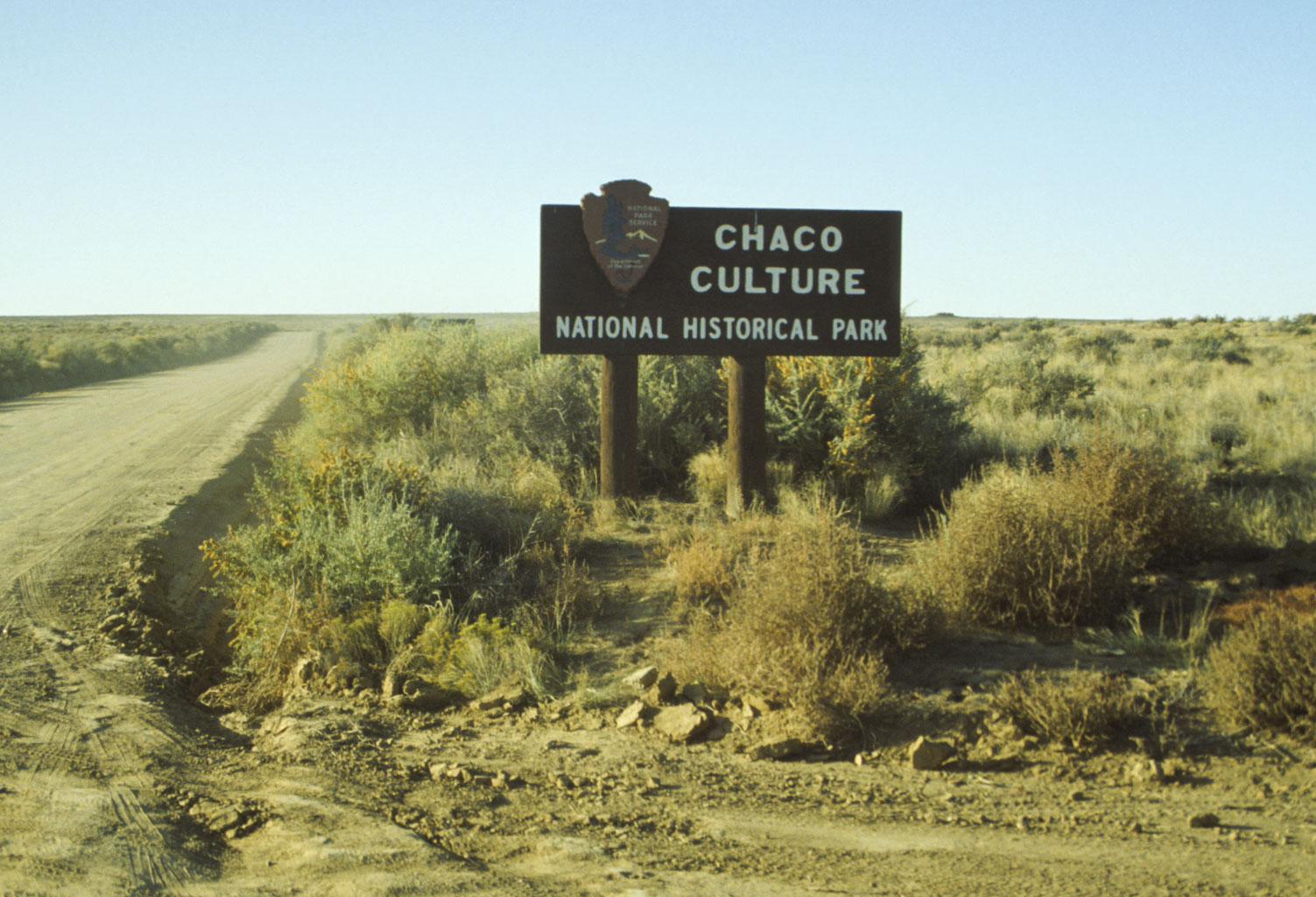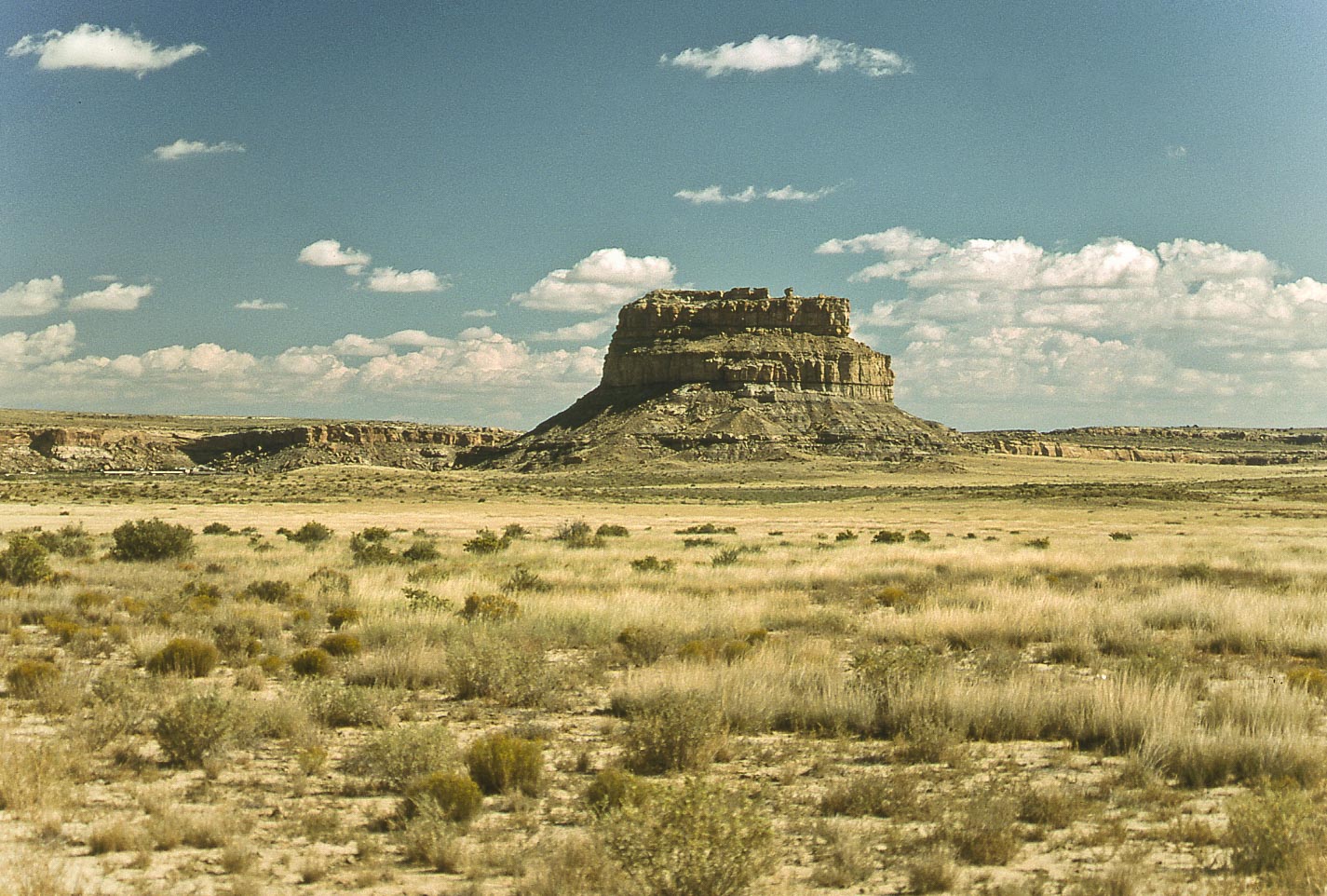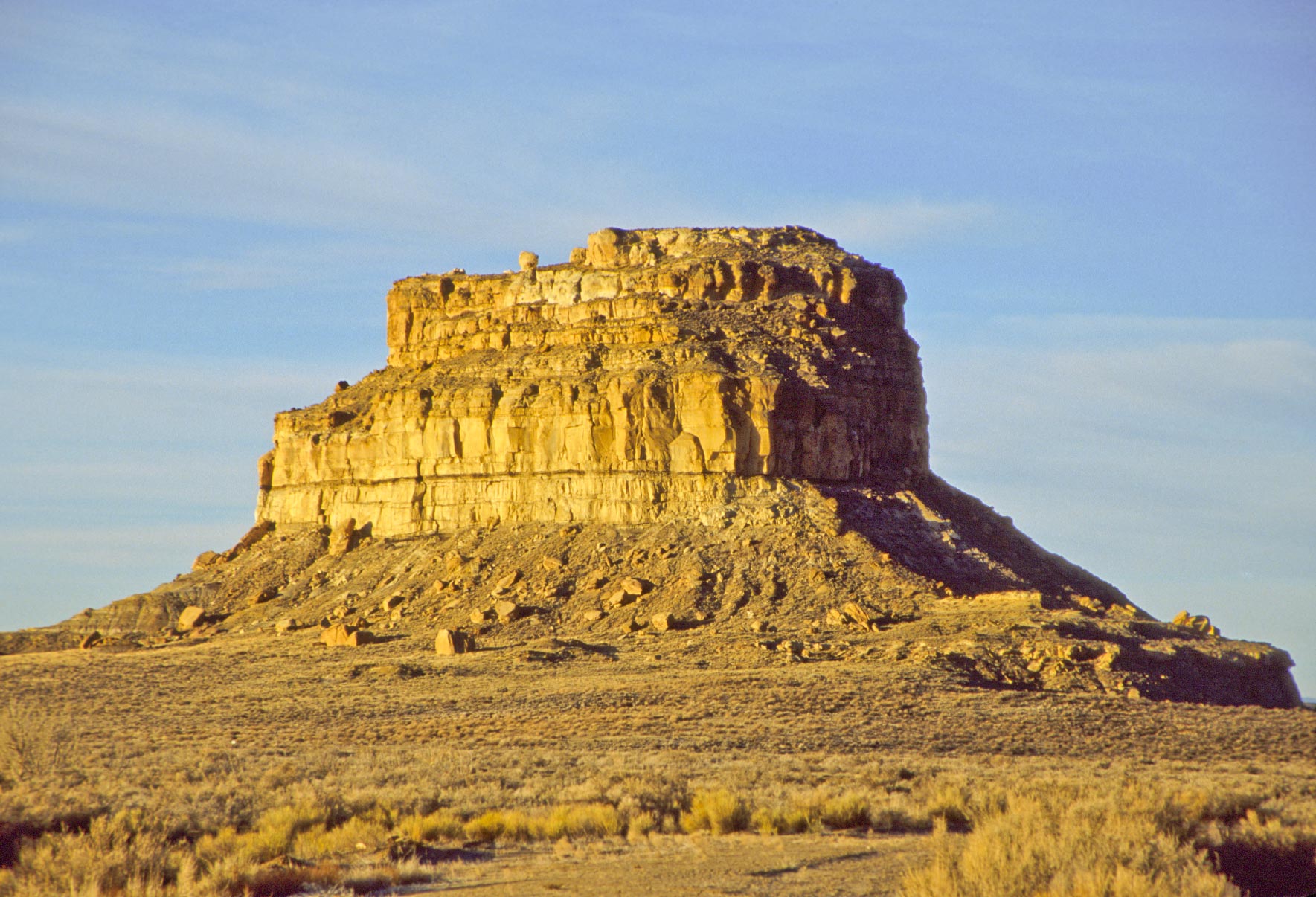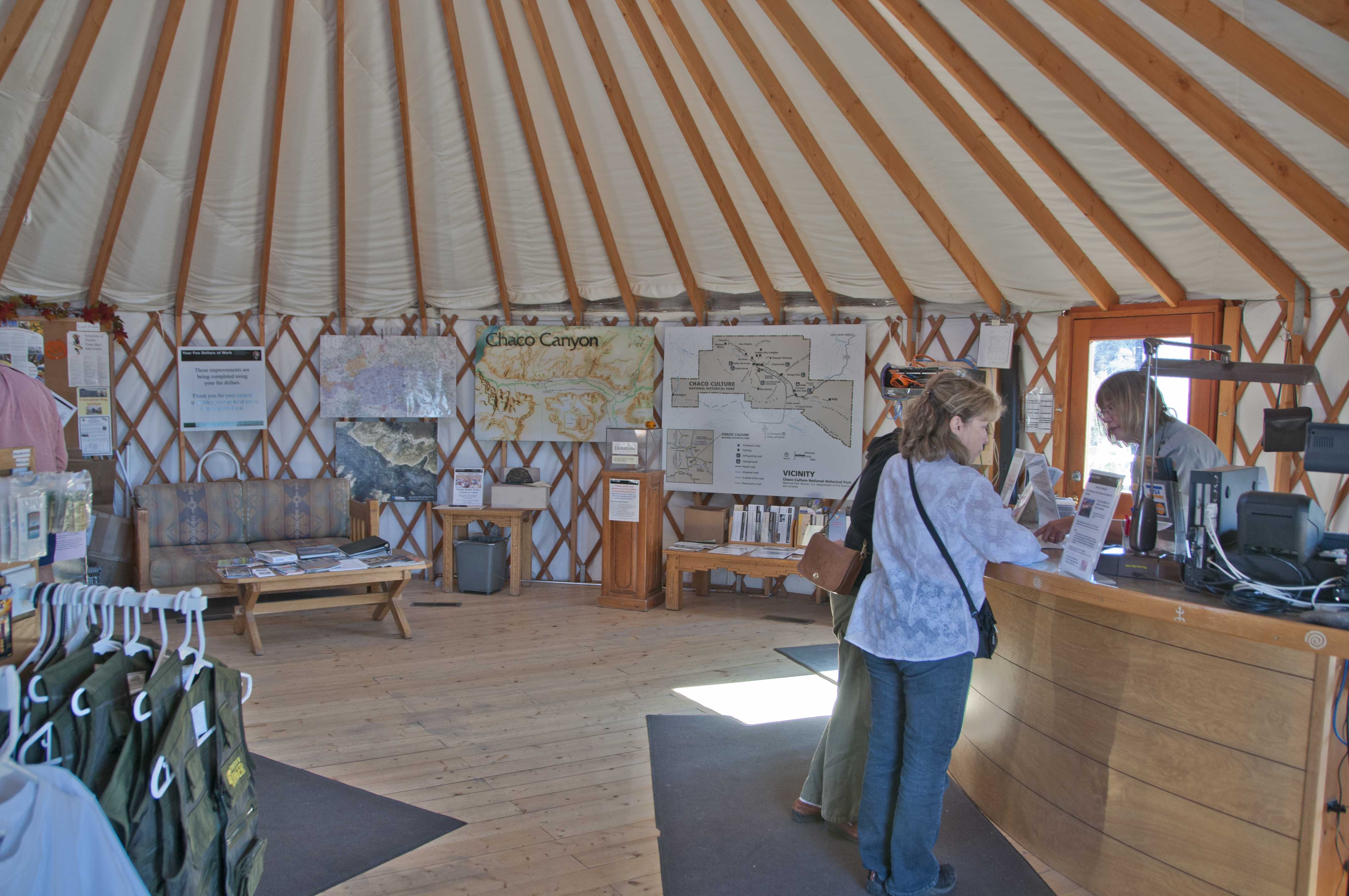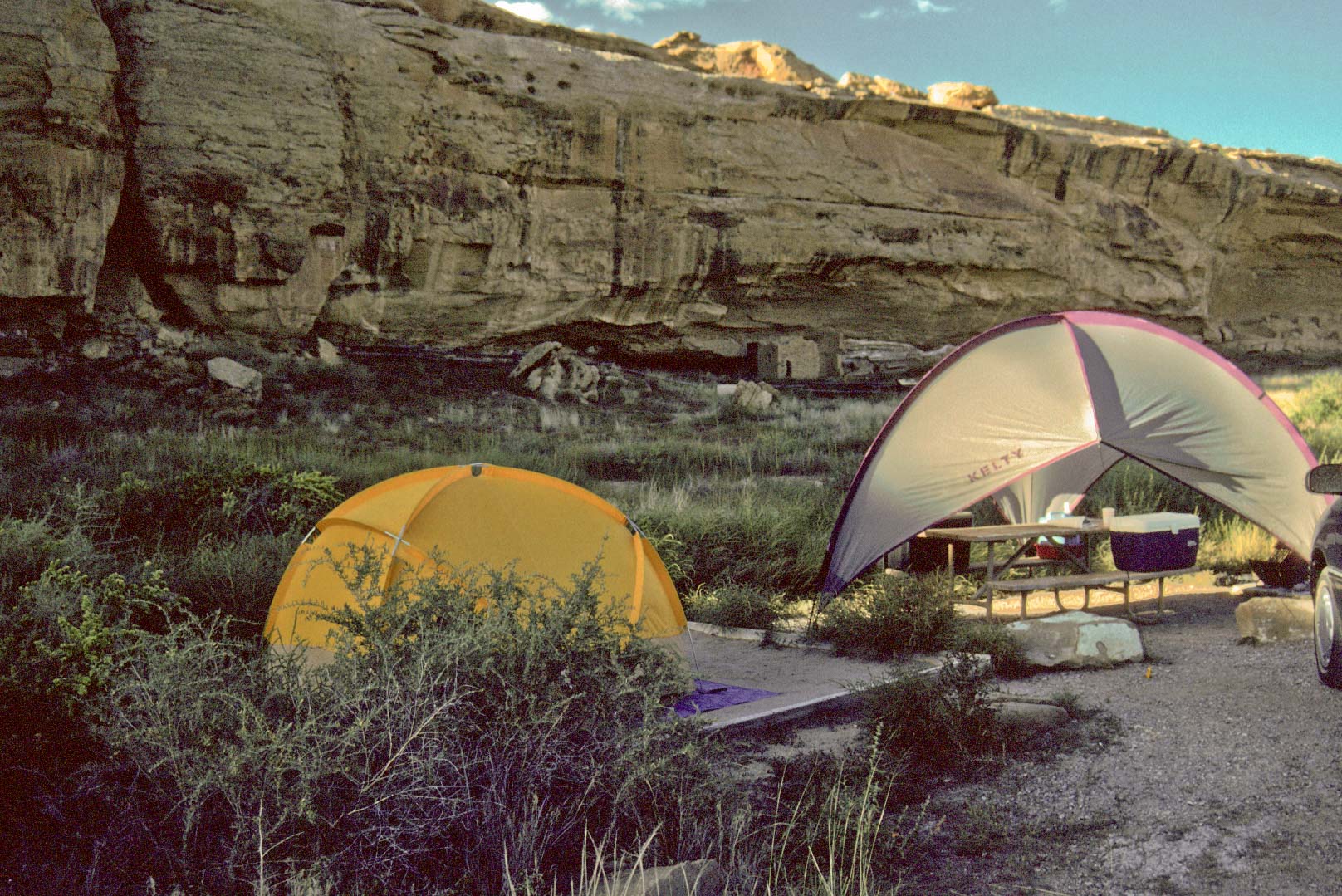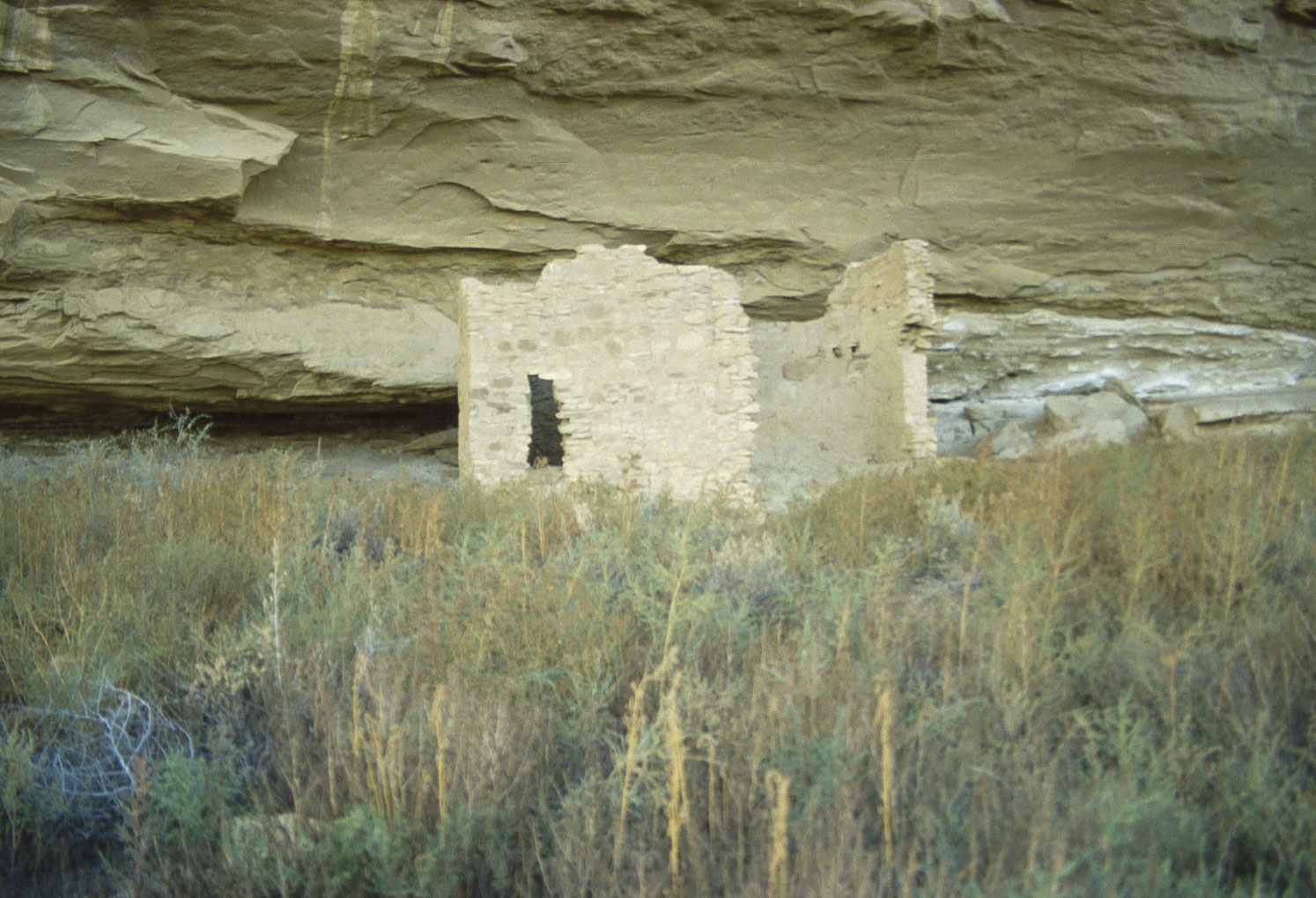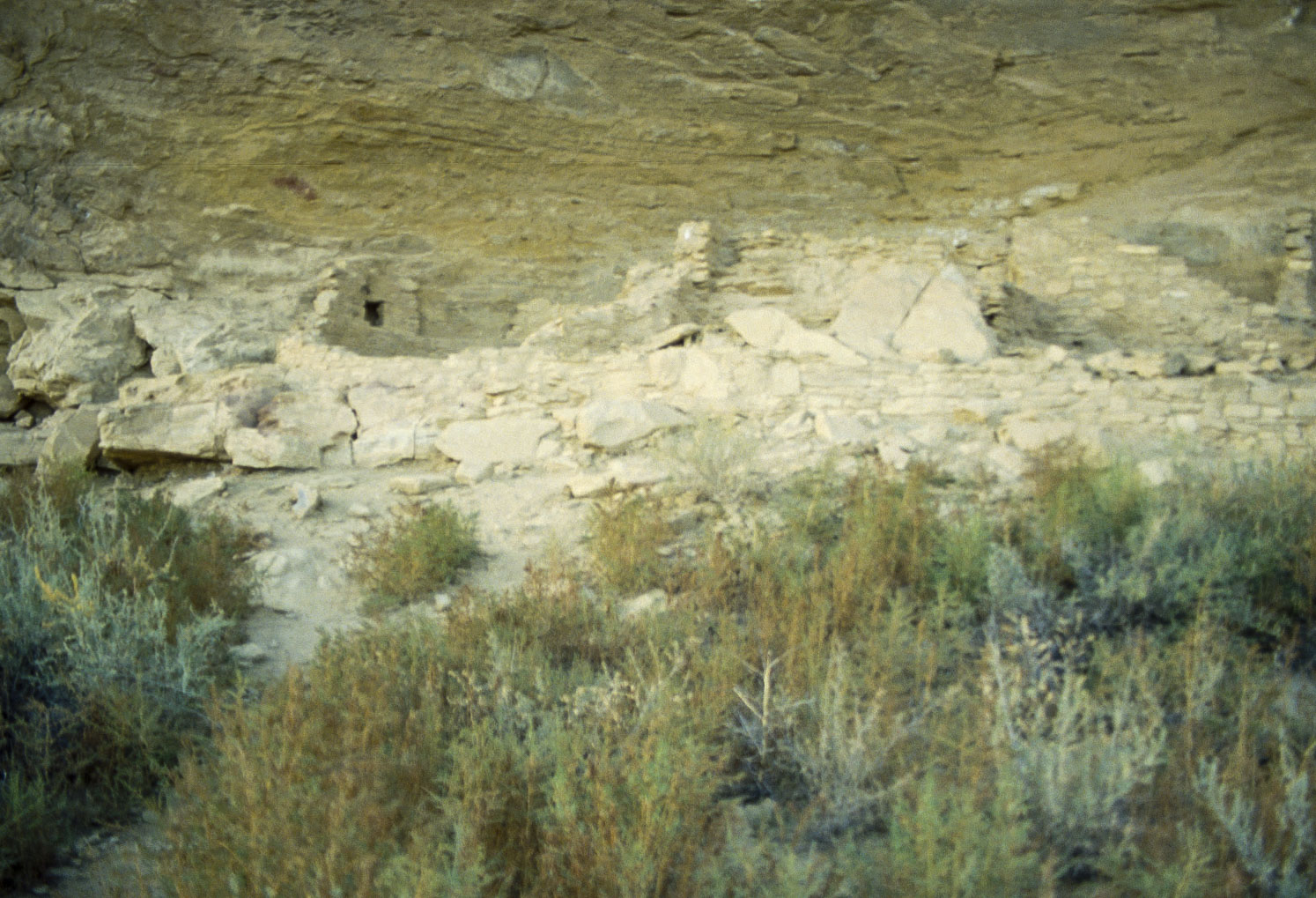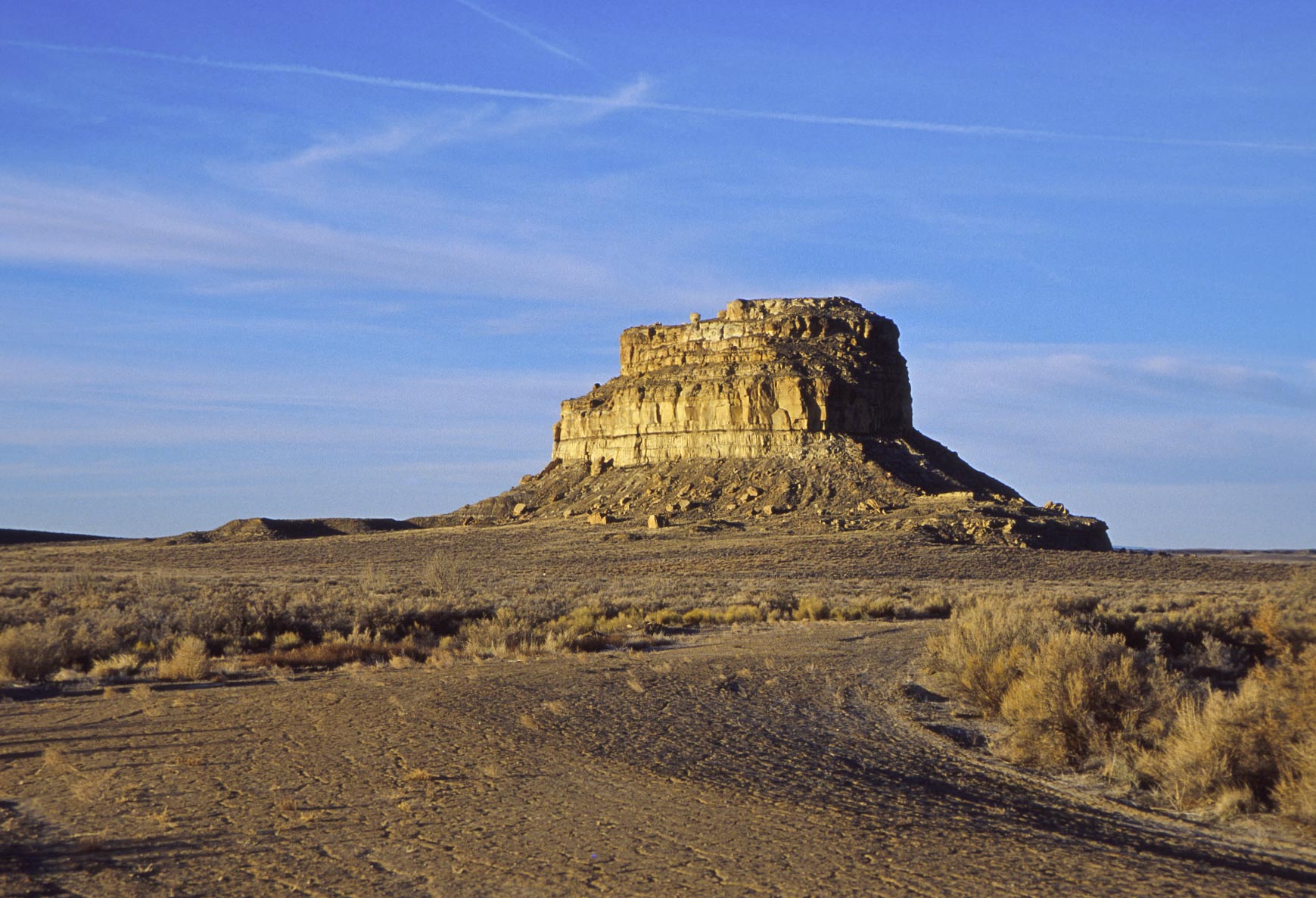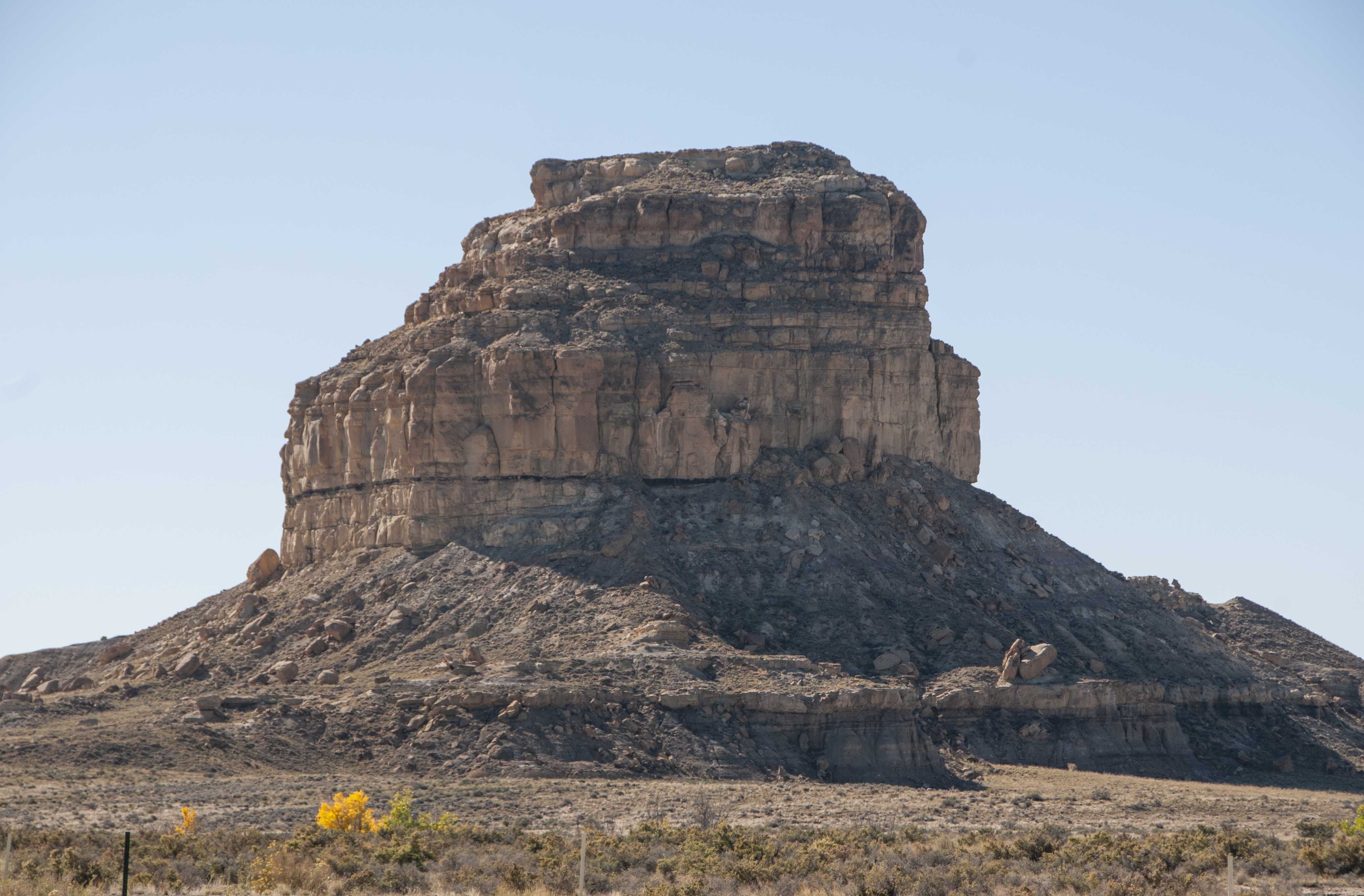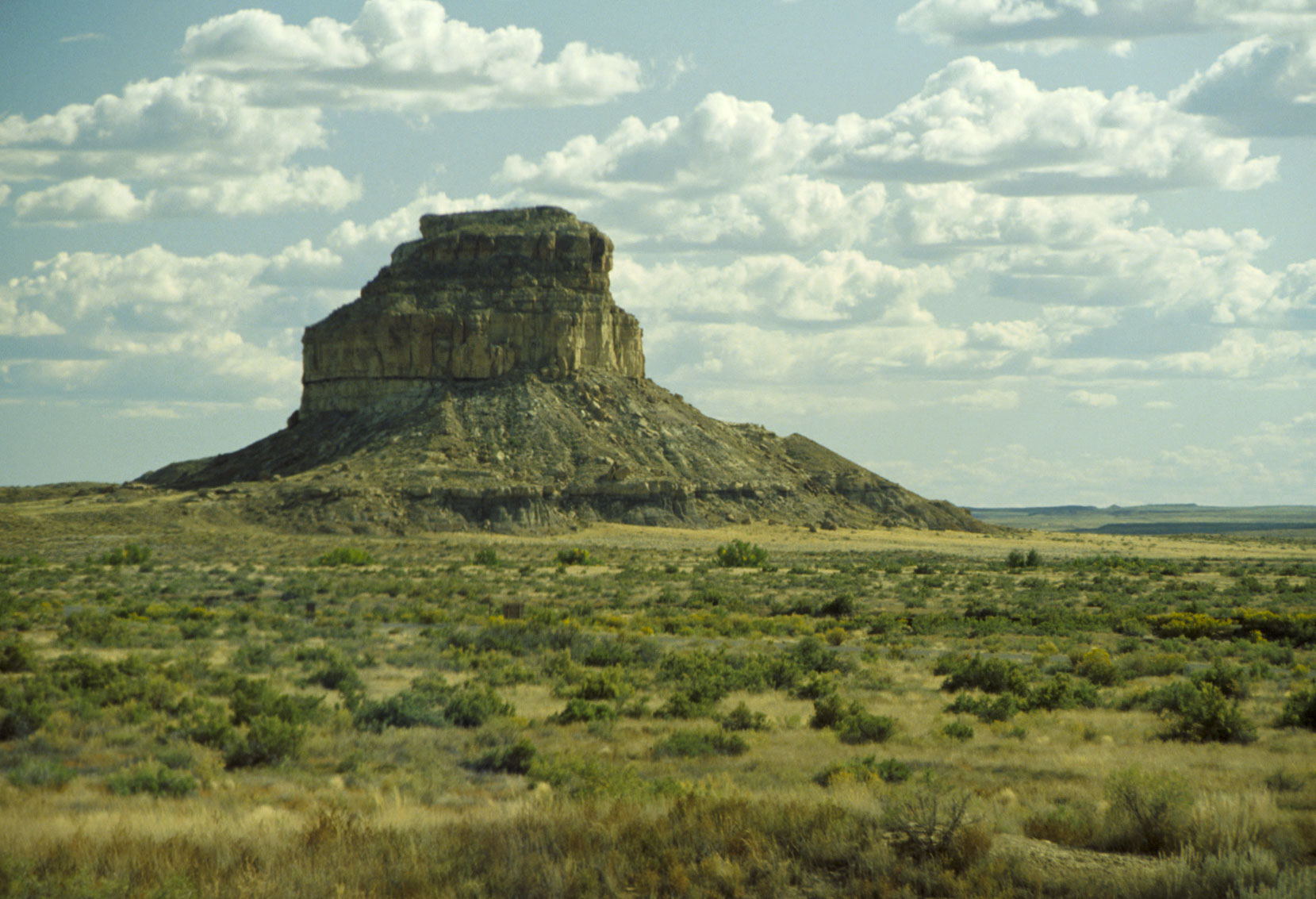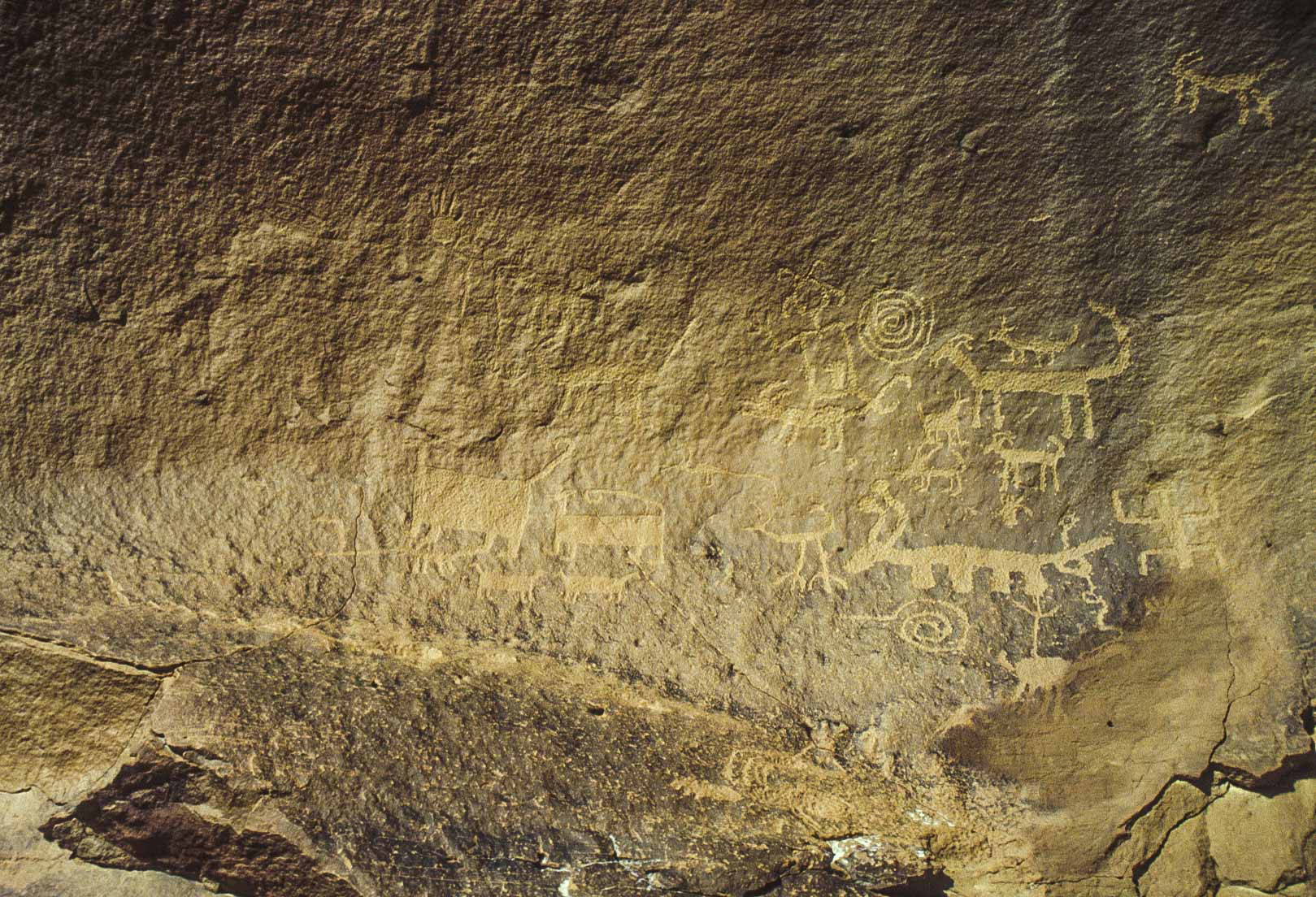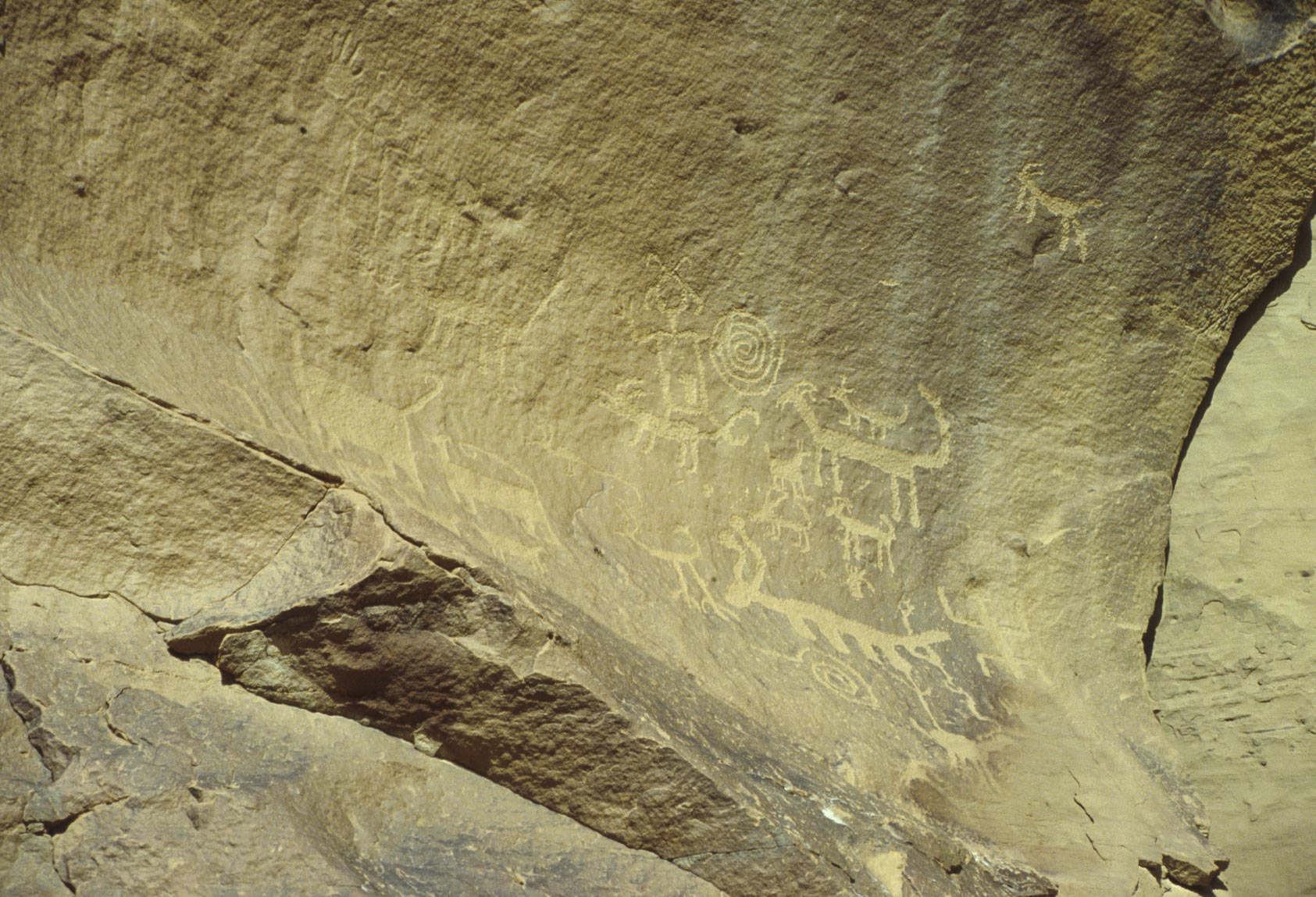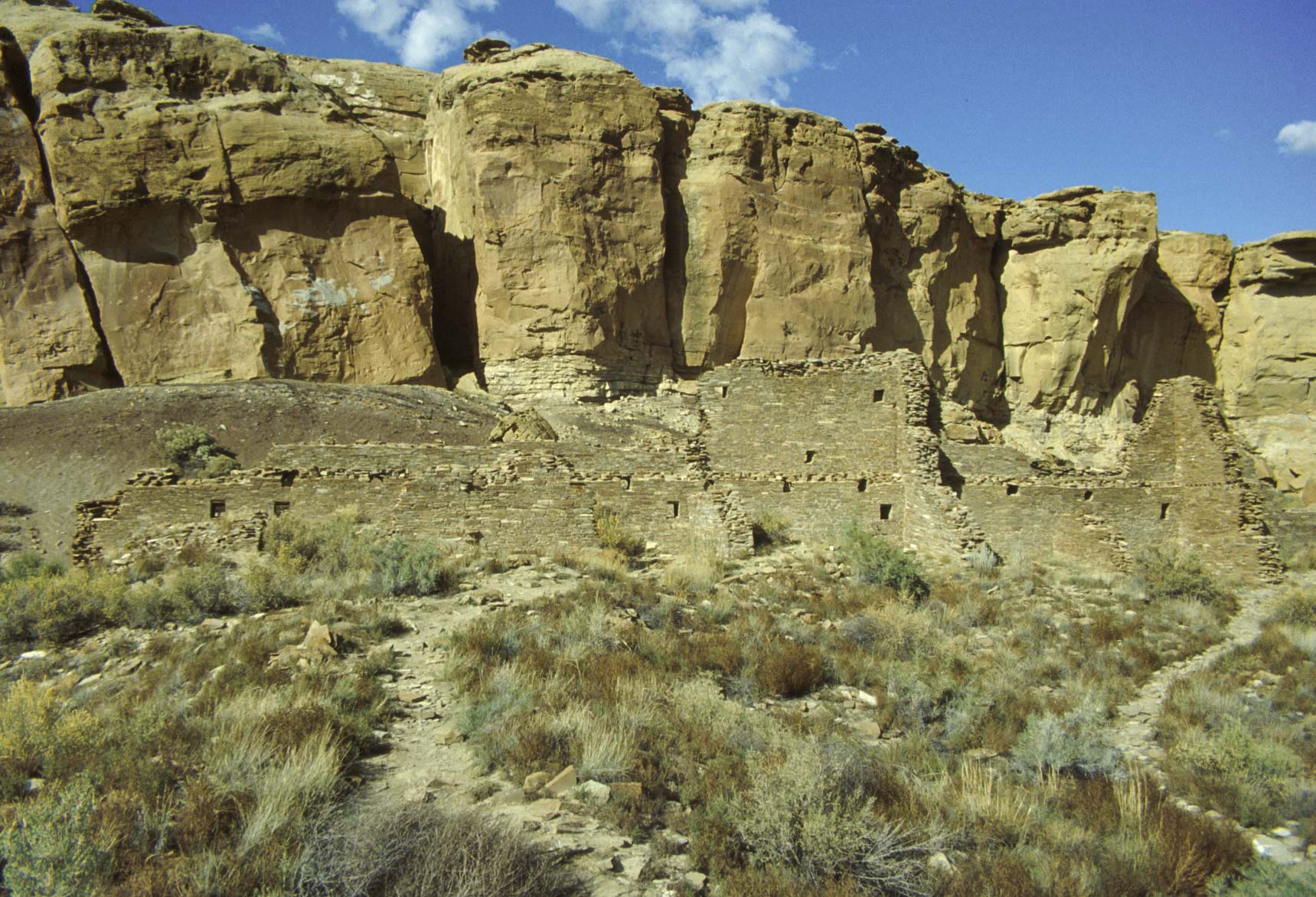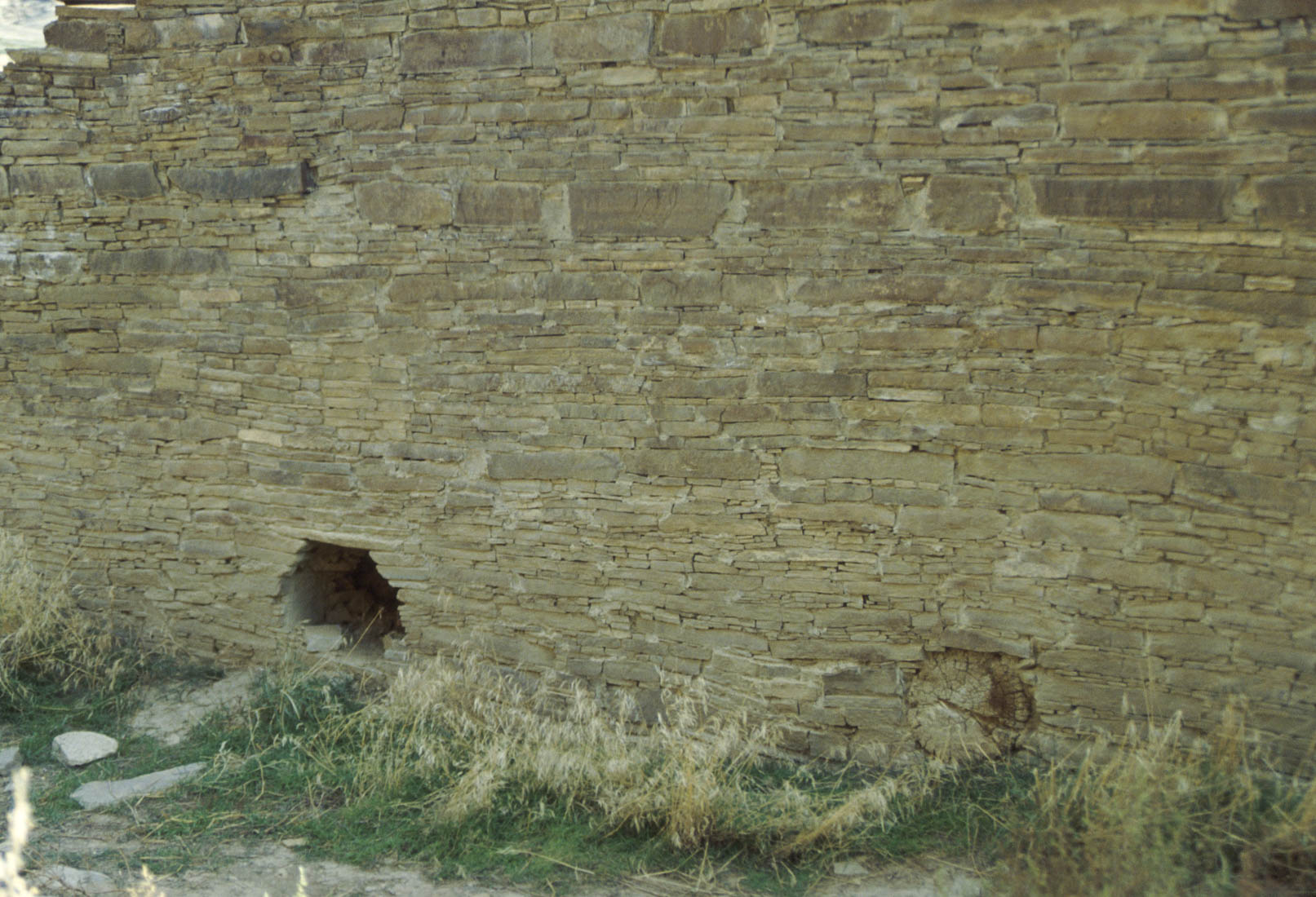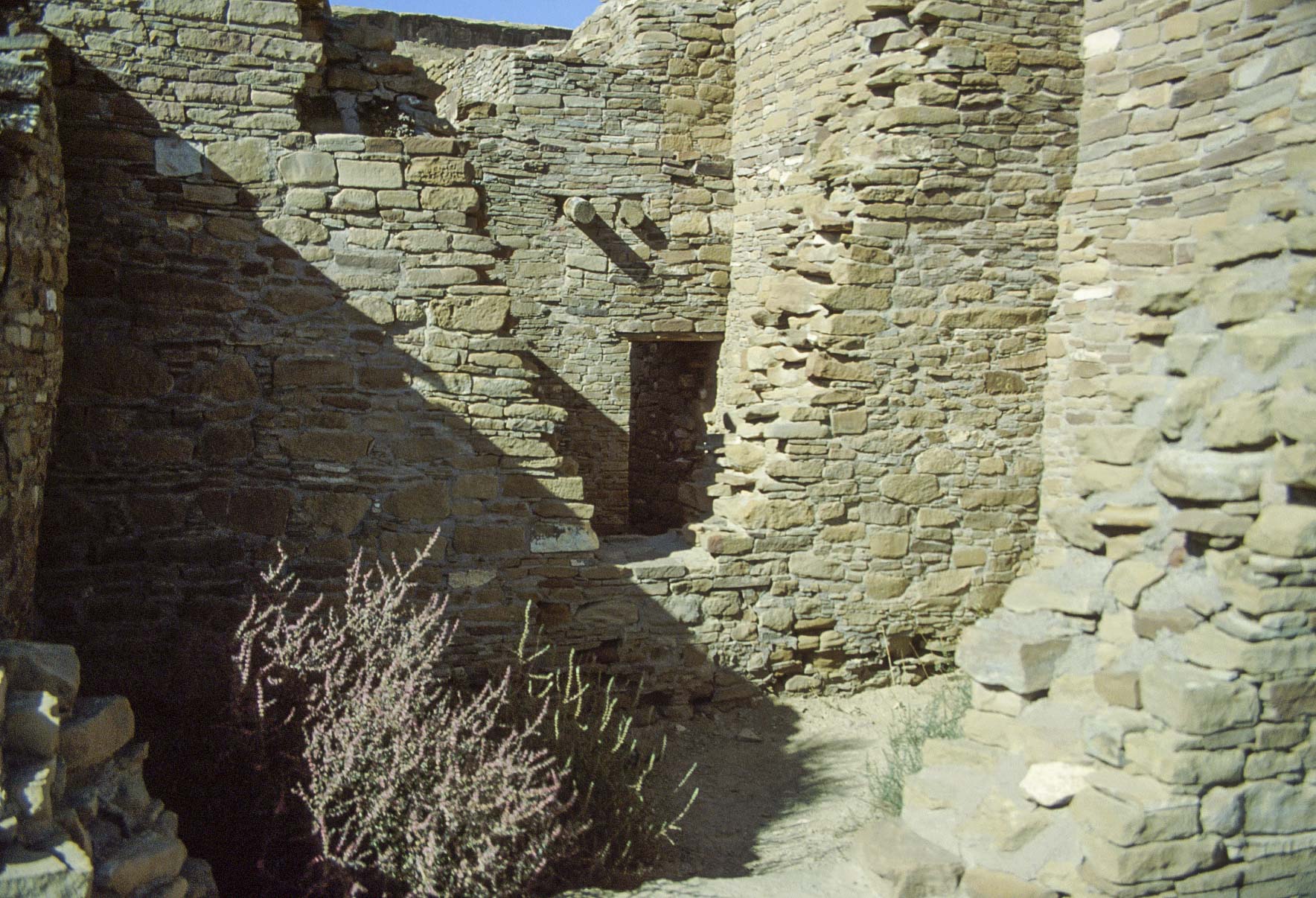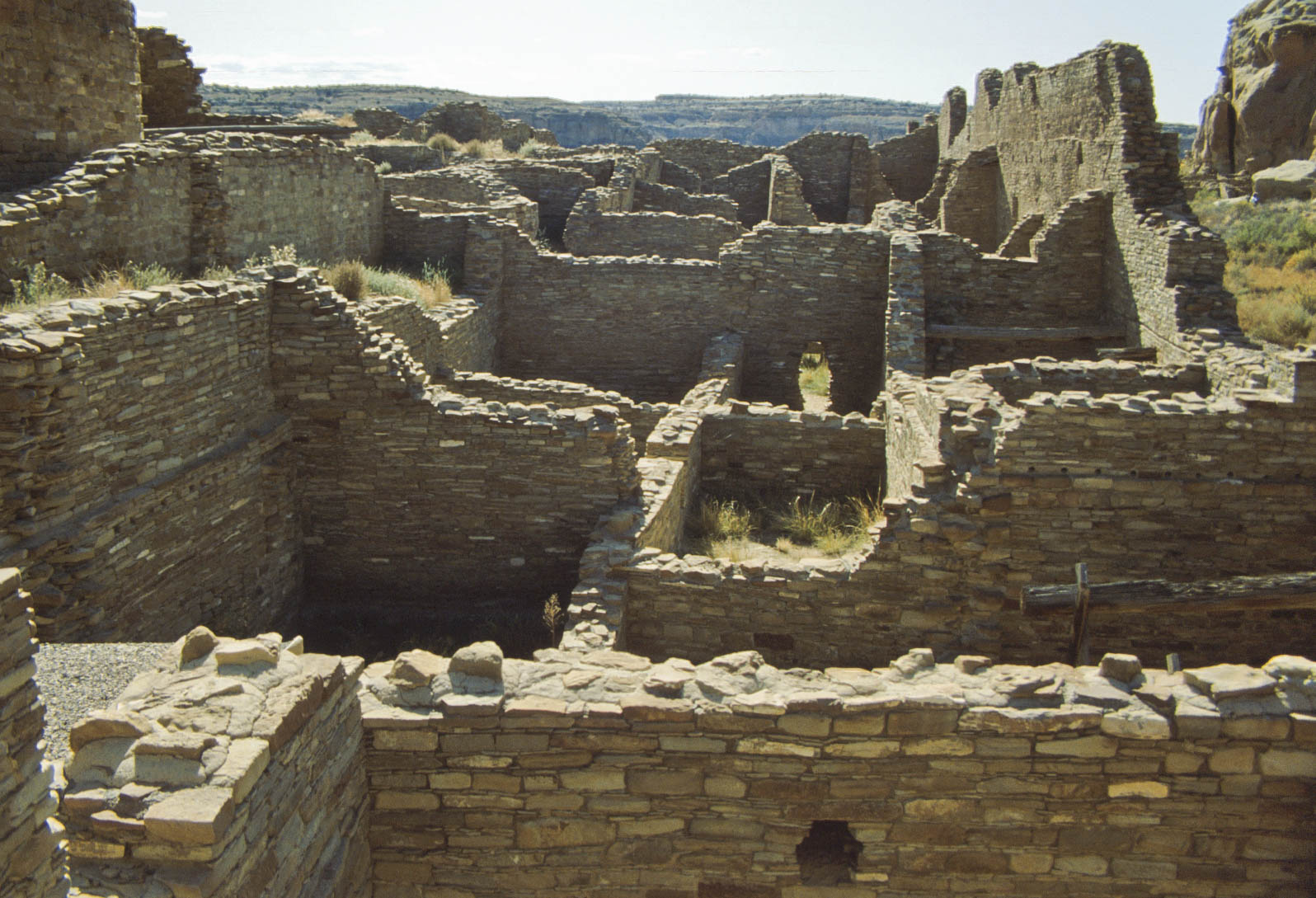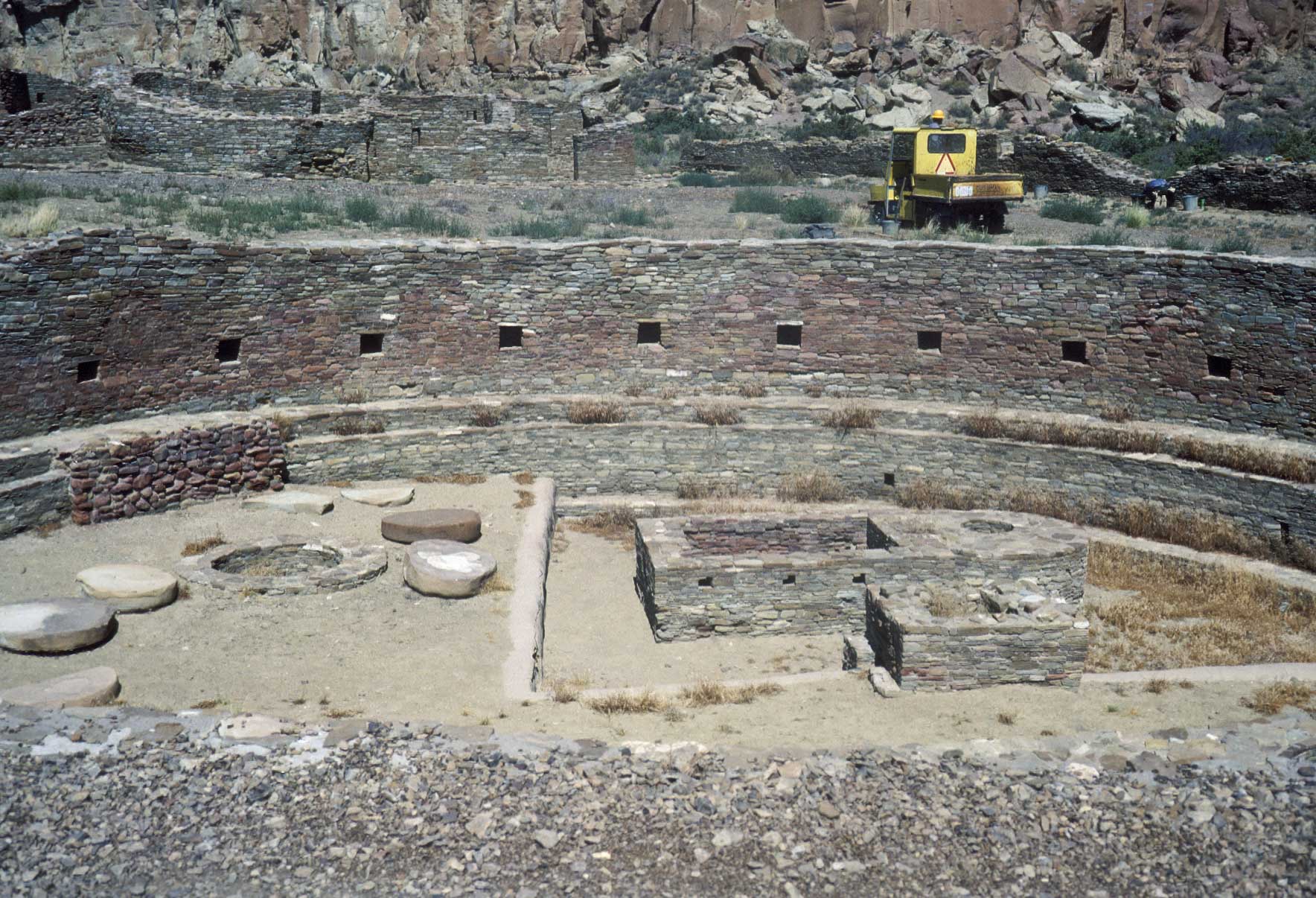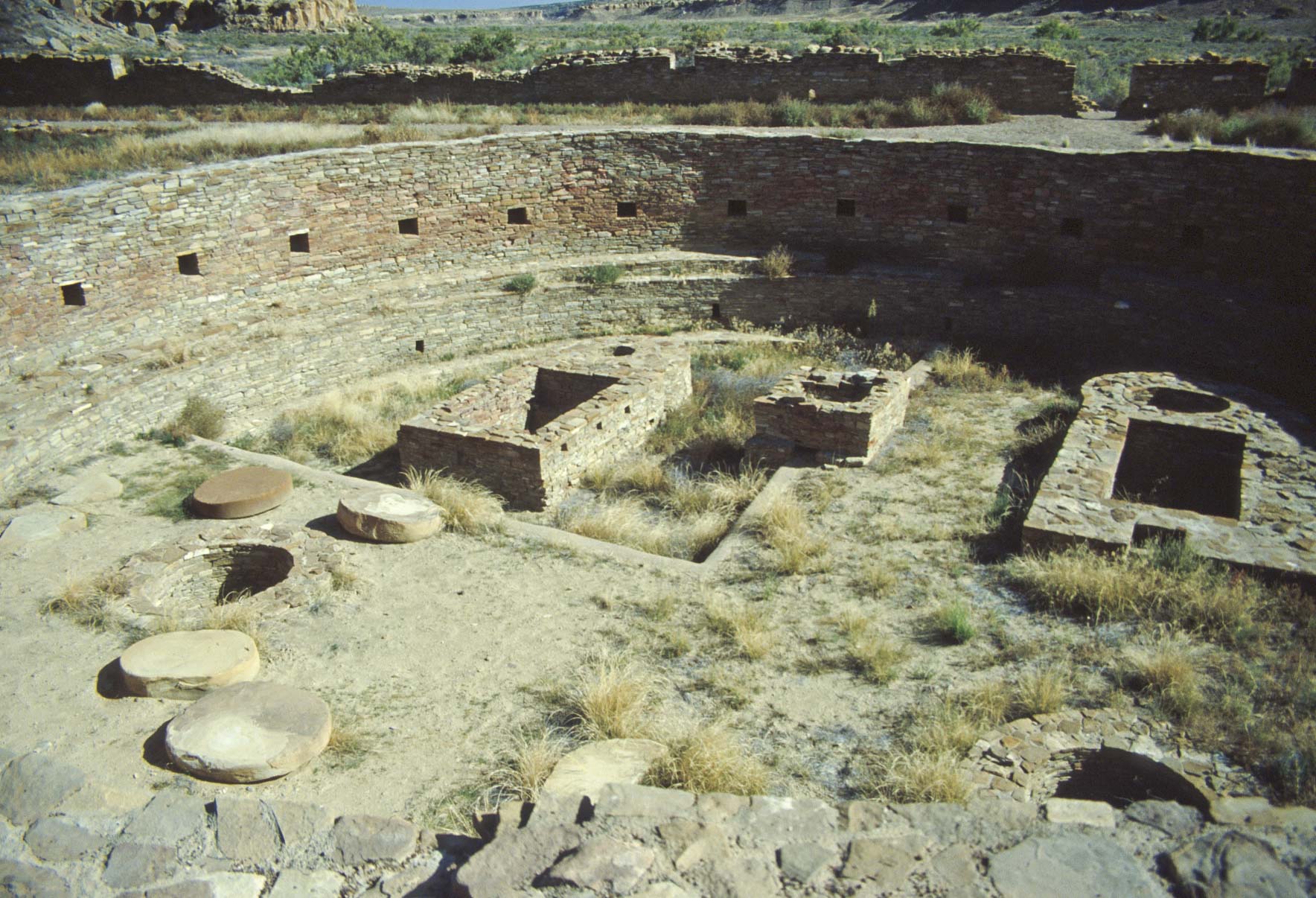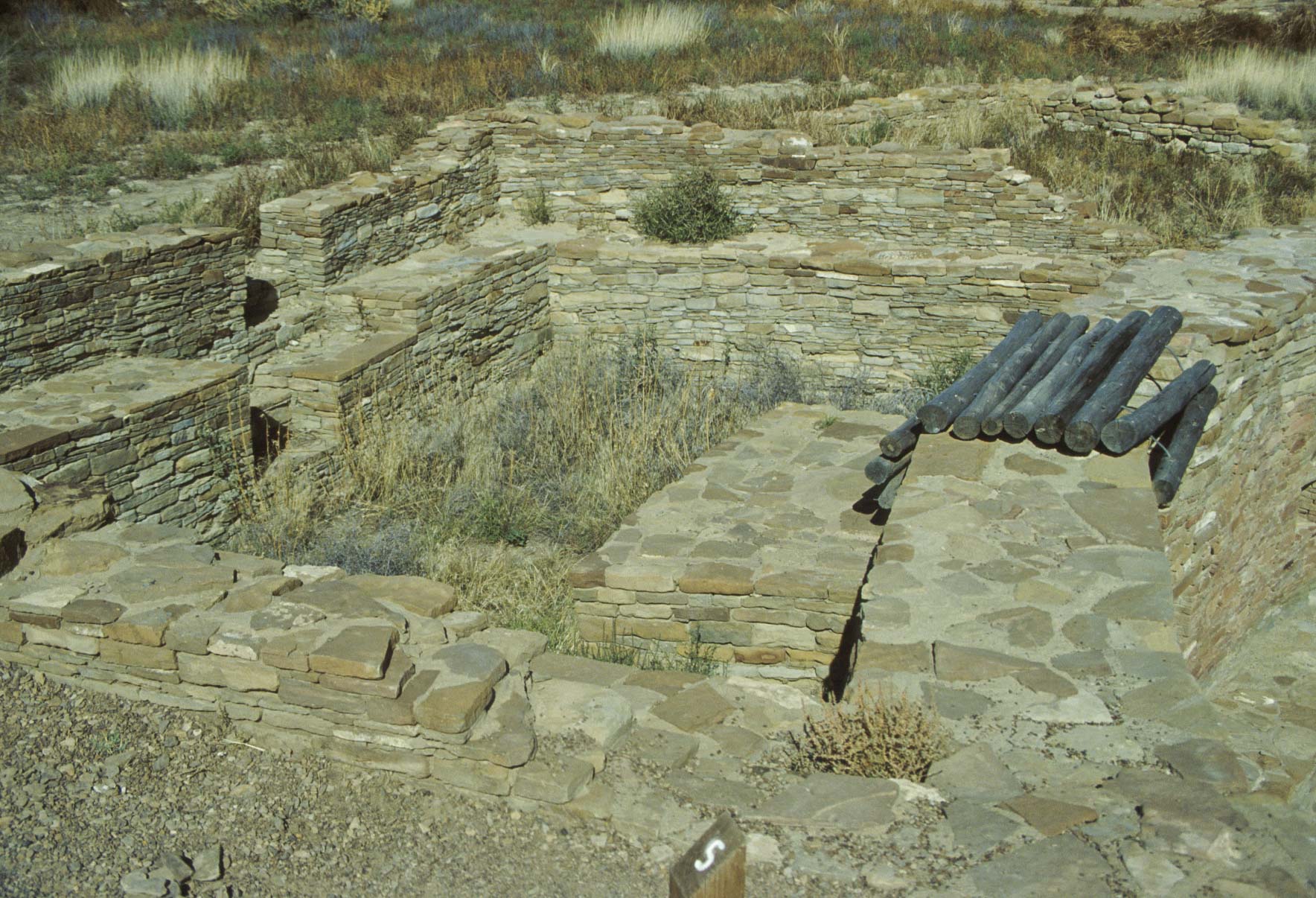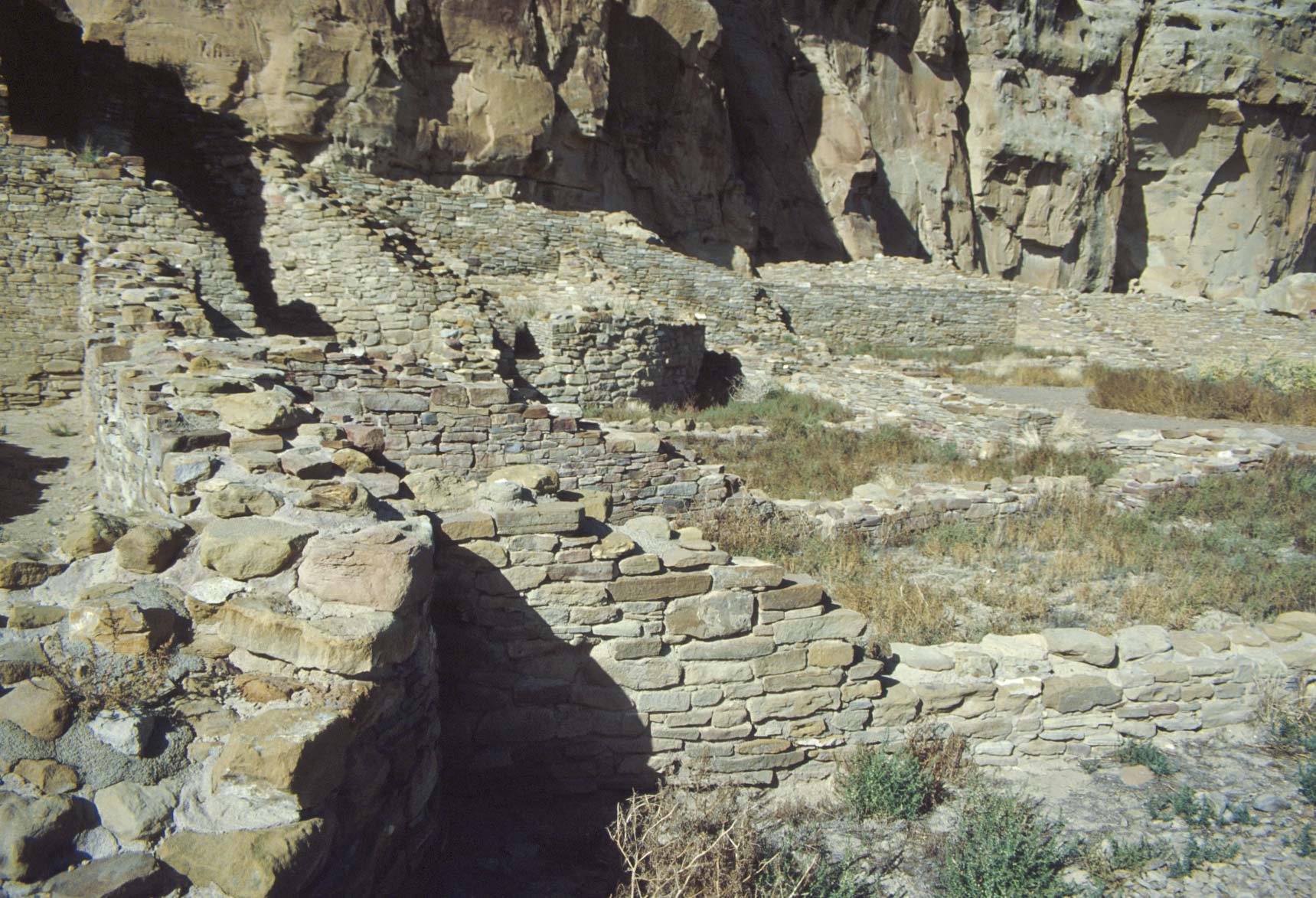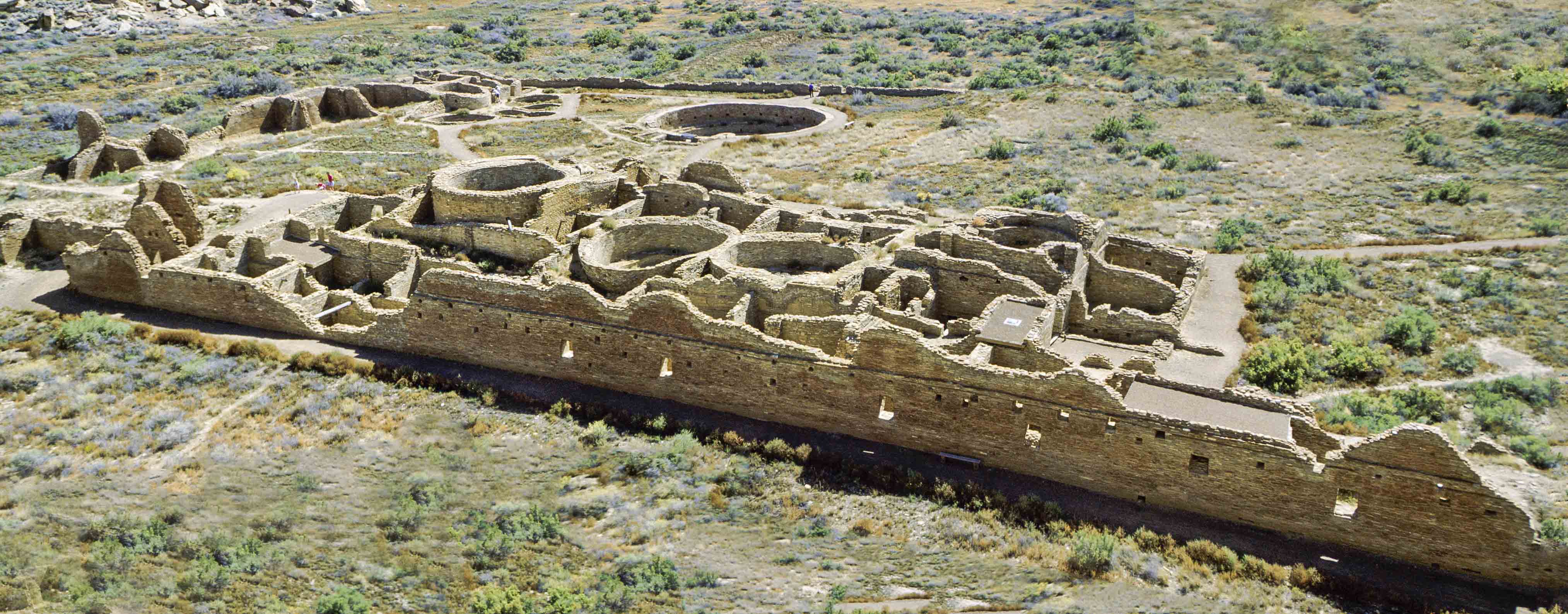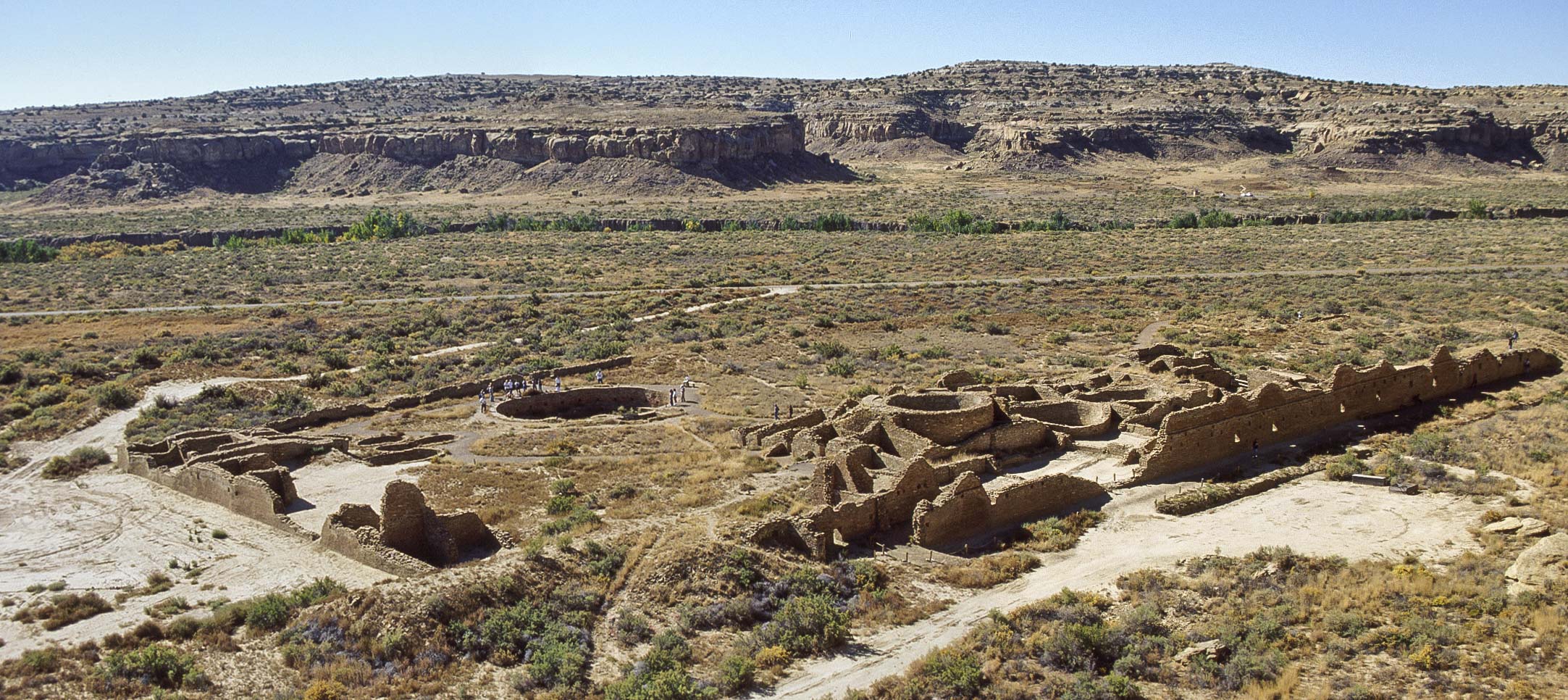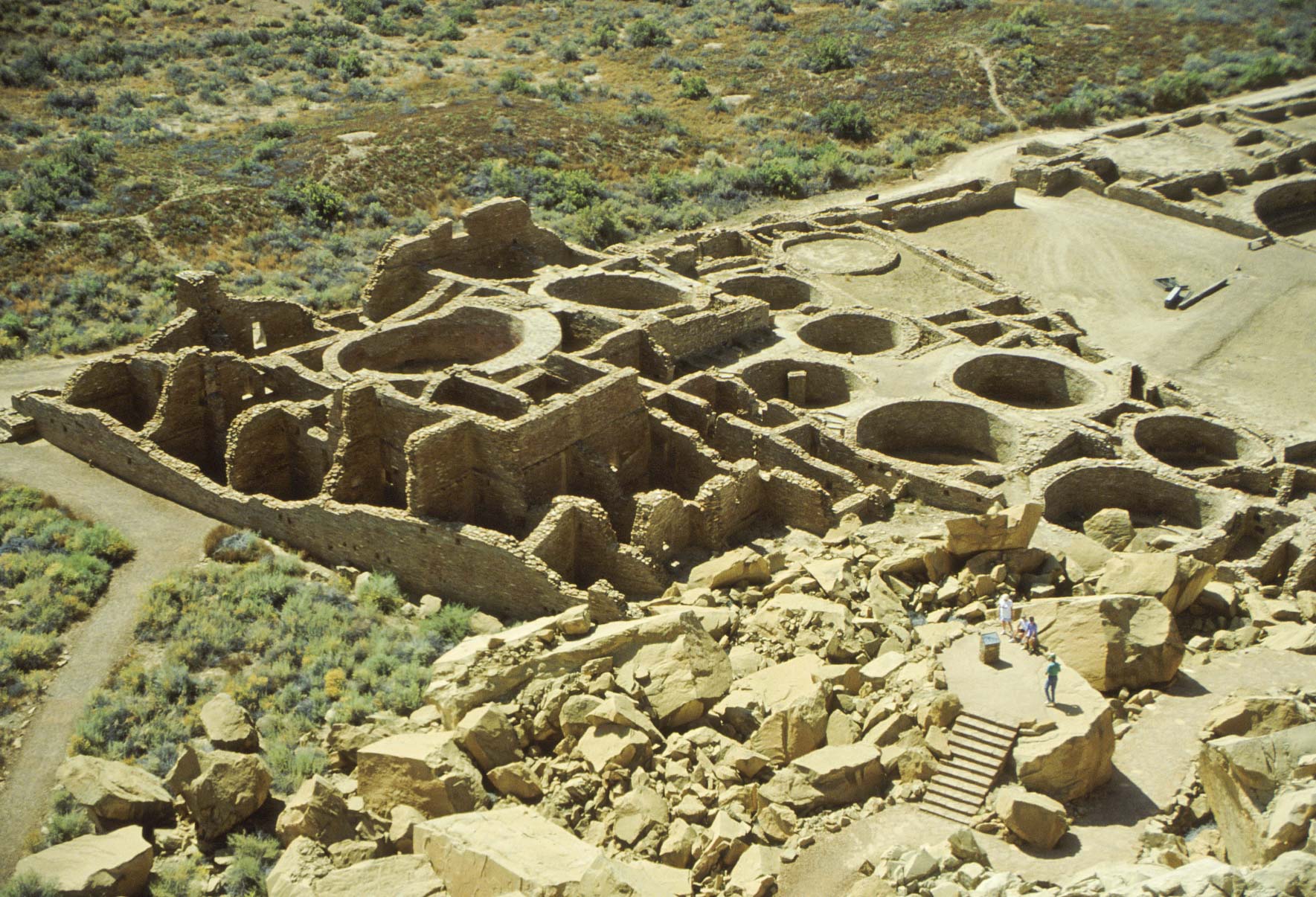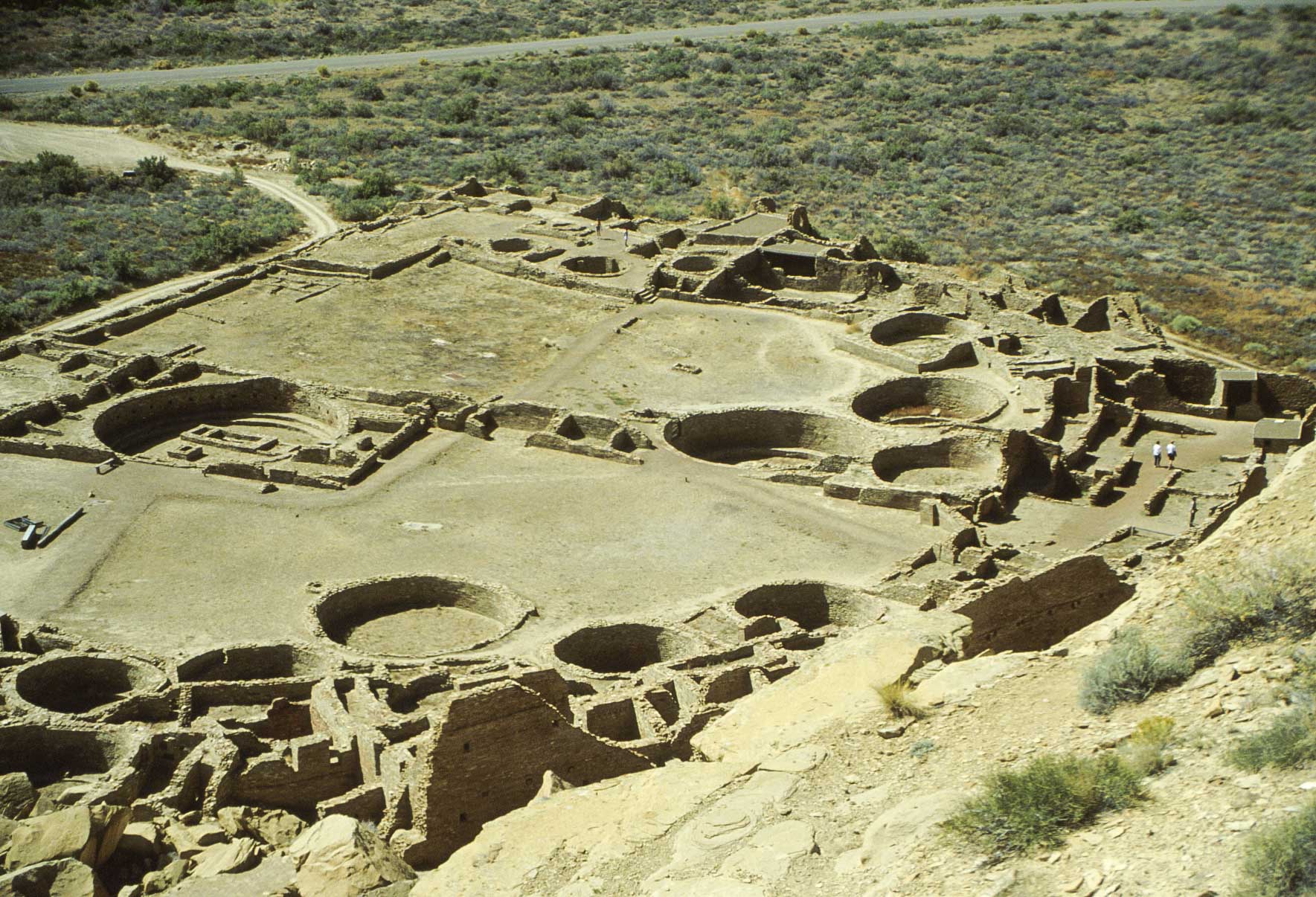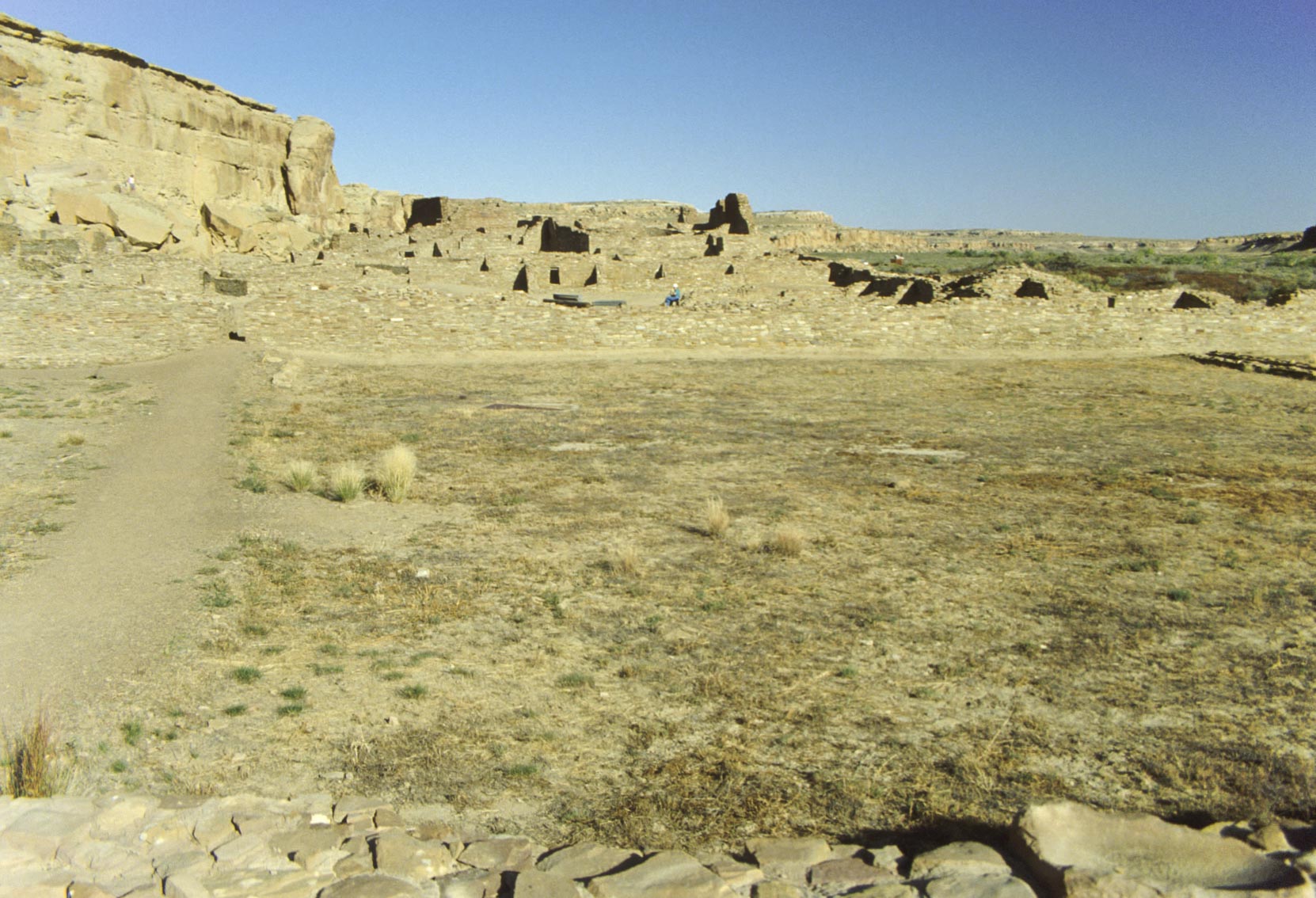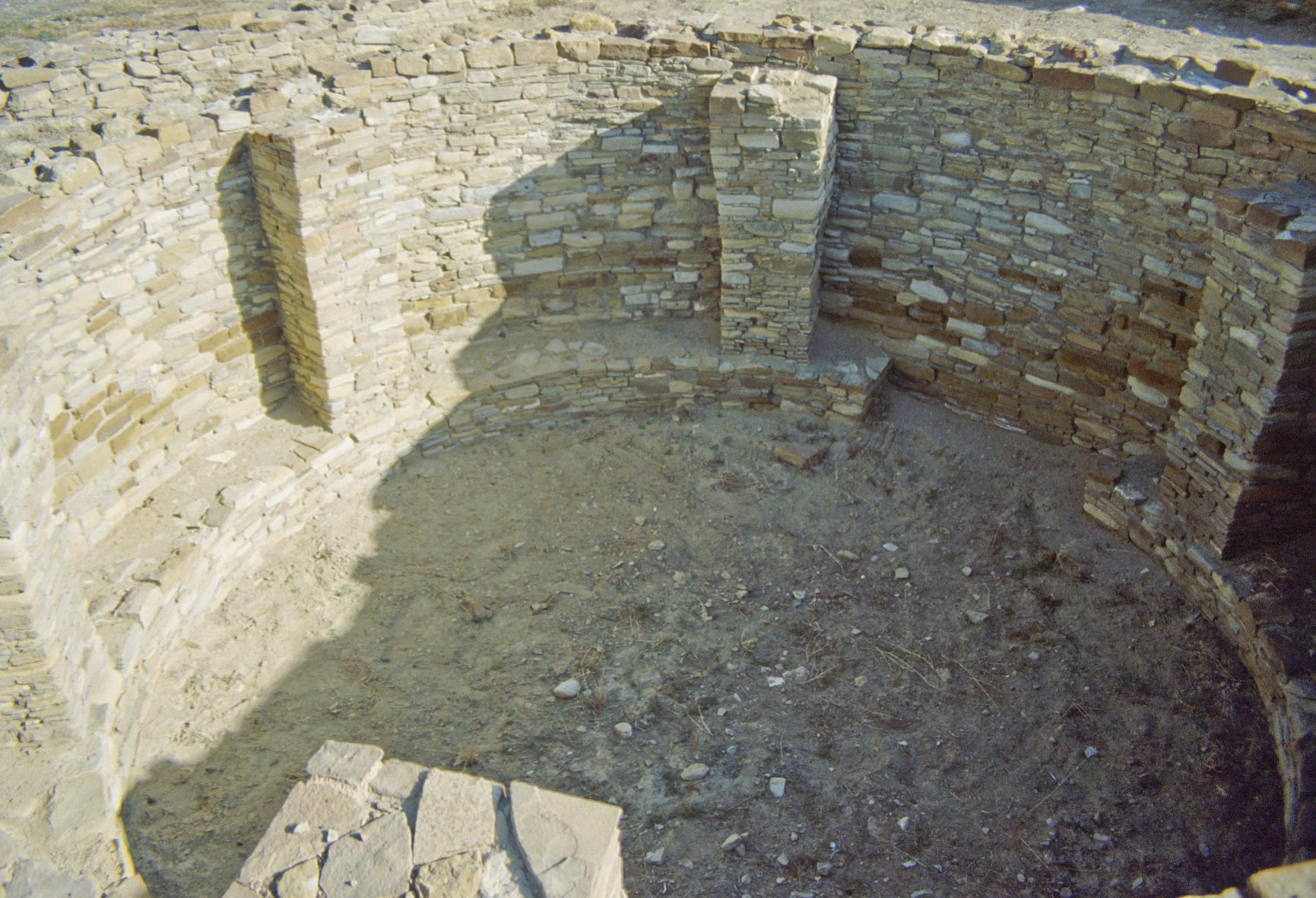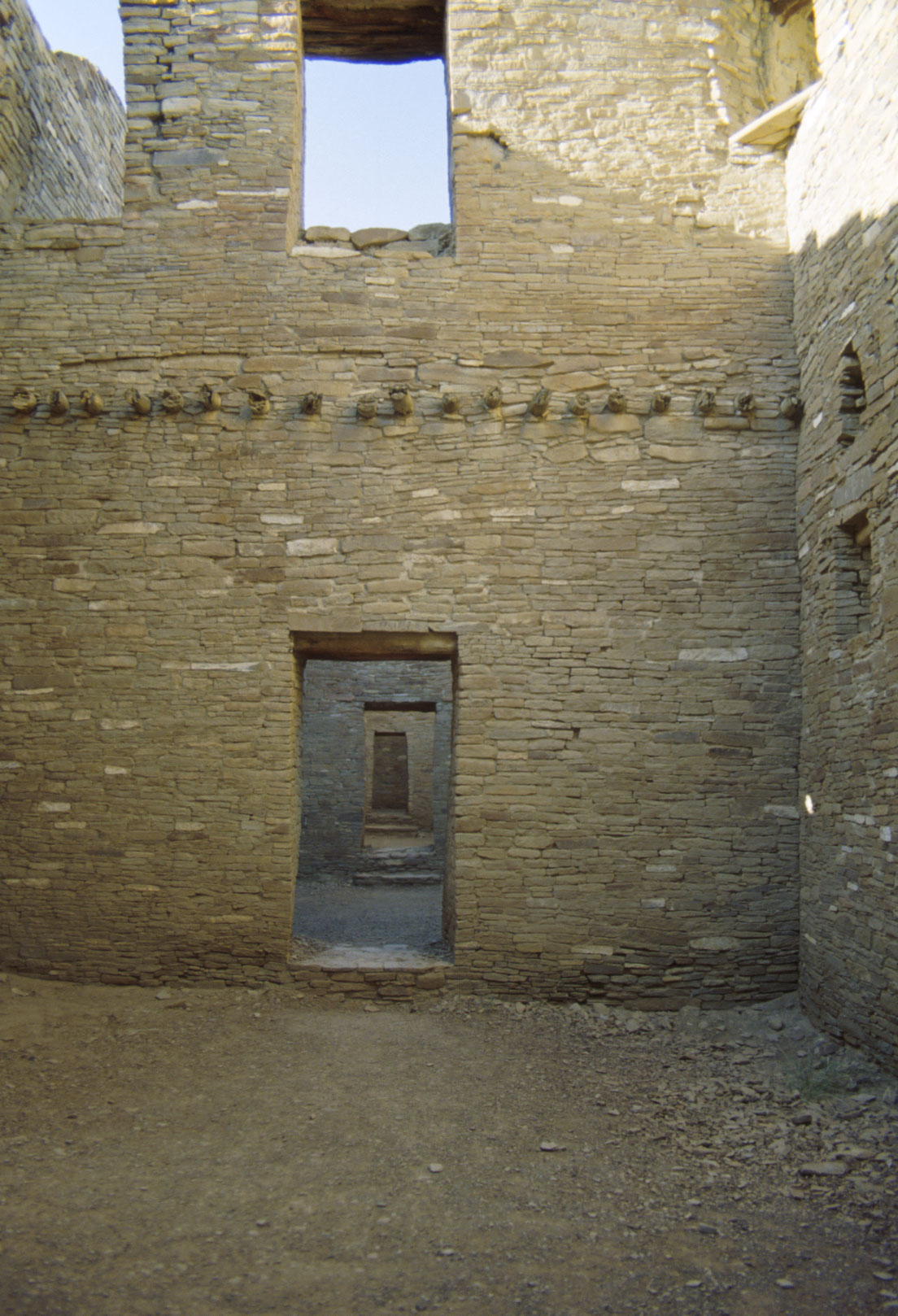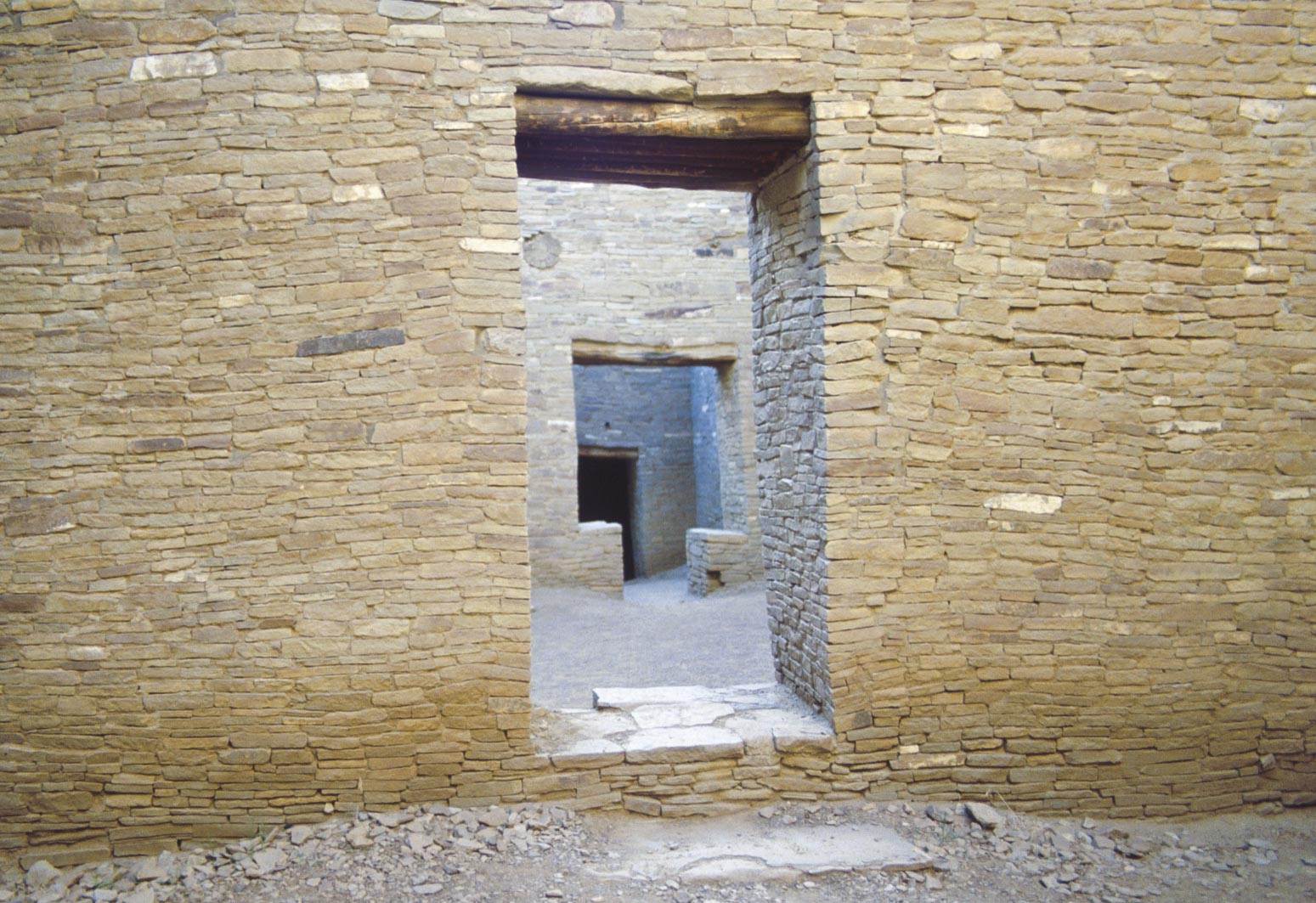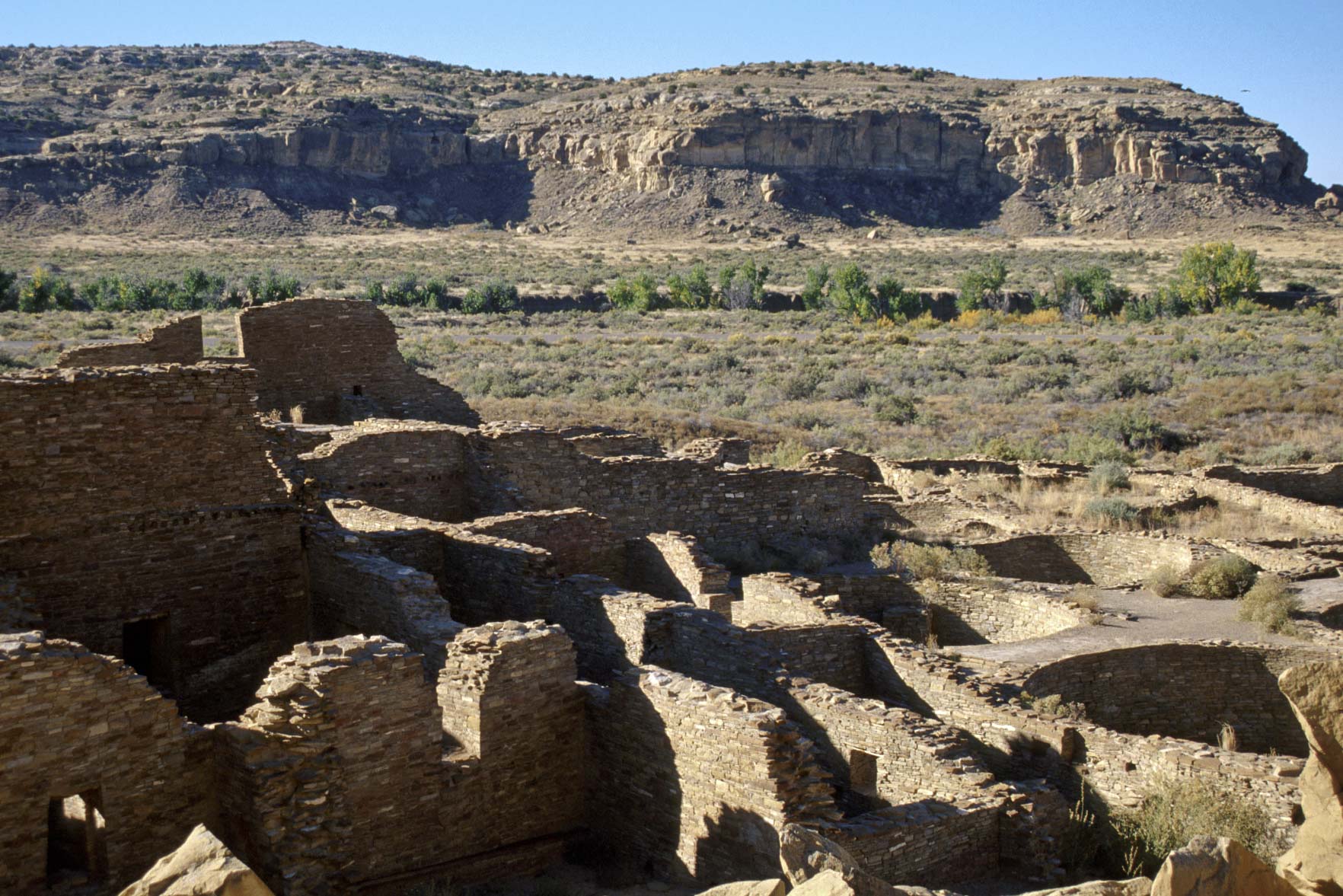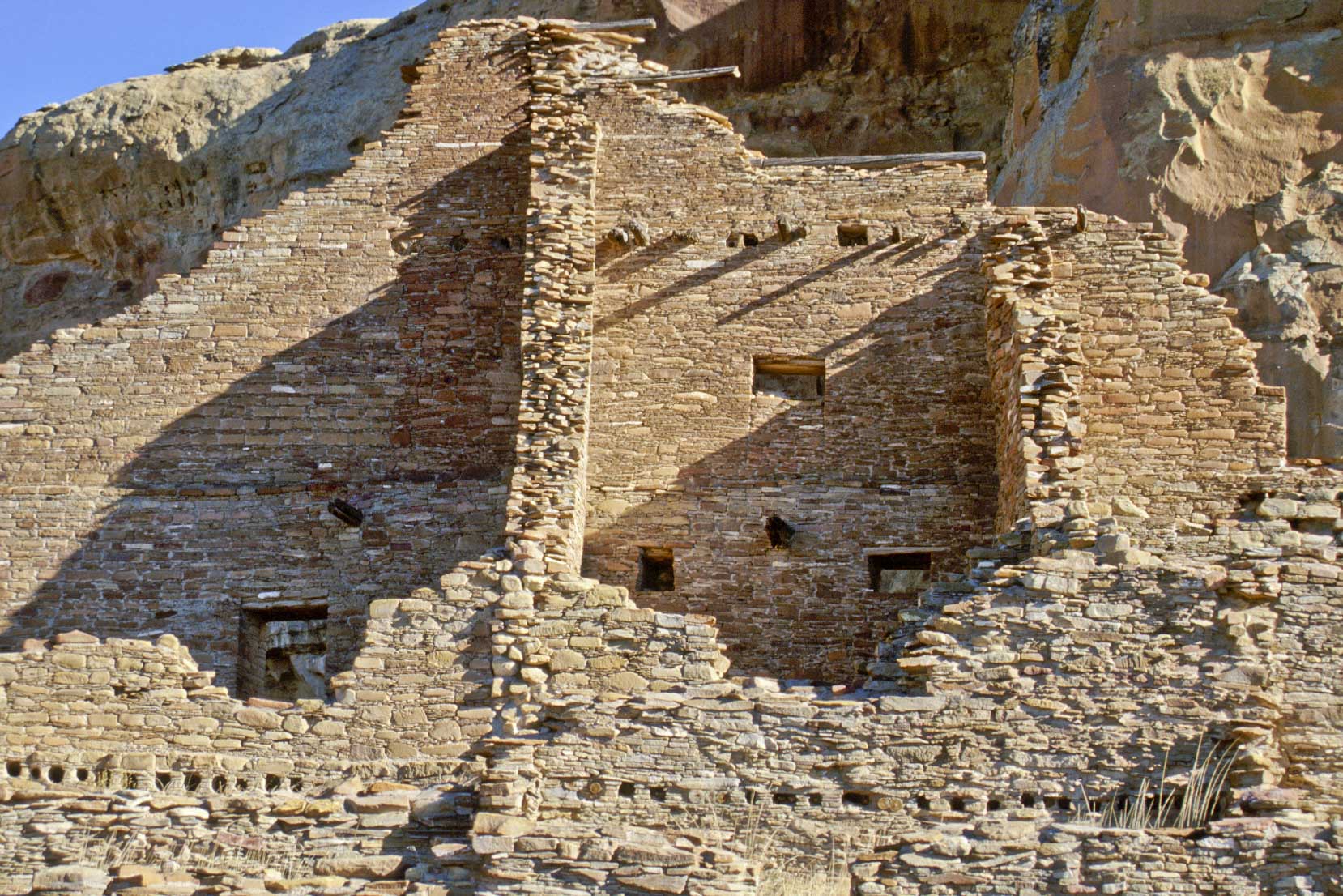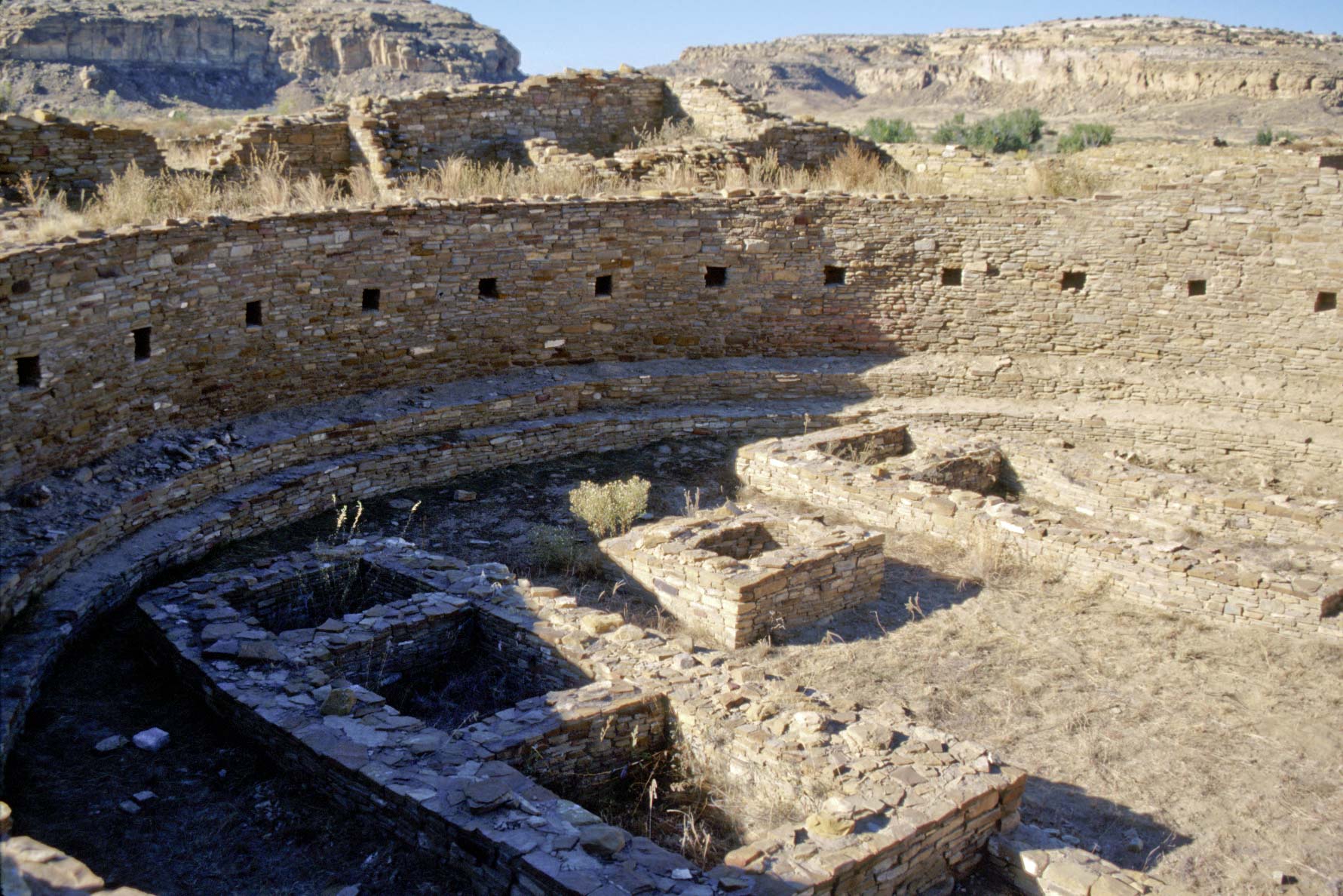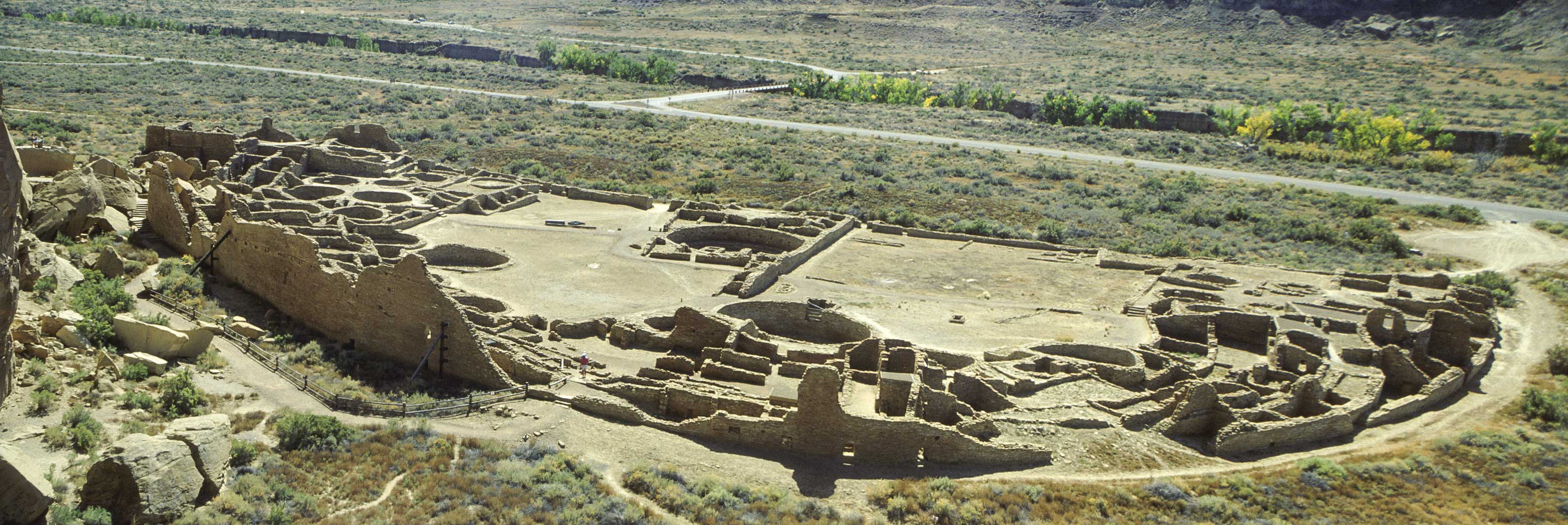Chaco Culture National Historical Park v.1
Out of all the national parks and monuments I have been to Chaco is my absolute favorite.
Not because of the scenery or geology or ruins, but because of the connection it has to my soul. My first
visit to Chaco in 1989 was a deeply mystical experience.
I could almost hear the long vanished Ancestral Puebloans calling to me at night as I sat by the campfire. I
have been to Chaco many times since then, and each time I still have a bit of that initial feeling. But I digress.
I have divided my presentation of Chaco into 3 volumes. Volume 1 covers park facilities and the
ruins along the first part of the loop drive. The ruins are Una Vida, Hungo Pavi, Chetro Ketl, and Pueblo Bonito. Volume 2
explores sites along the return part of the loop drive, Pueblo del Arroyo, Casa Rinconada, and the small Bc sites, as well as the
outliers, Tsin Kletzin and Wijiji. We will hike my two favorite trails in Volume 3, the Peñasco Blanco and Alto Mesa trails.
Along the way we will visit Kin Kletso, Casa Chiquita, Peñasco Blanco, and the Pueblo Alto complex. Permits are required for
all the trails at Chaco and can be obtained at the visitor center. The ruins and trails presented in these 3 volumes are places I
have visited and photographed, but there are many more sites in and around Chaco Canyon.
Some Background on the Chaco Phenomenon
Chaco Canyon is one of the two most important centers of Ancestral Puebloan (formerly Anasazi) culture, the other
being Mesa Verde. The chronology of Ancestral Puebloan development is divided into periods, beginning
with the Late Archaic Period (1500 BC to AD 200) and ending with Pueblo V (AD 1600 to present). Although Chaco Canyon
was occupied during earlier periods, the spectacular rise and subsequent decline of Chacoan Culture, known as the
Chaco Phenomenon, occured during Pueblo II (AD 900-1100), and Pueblo III (AD 1100-1300). These periods are futher divided
into phases for the Chaco Culture. The time period from AD 900-1040 is known as Early Bonito or Hosta Butte Phase.
Beginning construction of multi-storied villages occured during this phase. Chaco Culture reached its zenith during the Classic Bonito
Phase (AD 1040-1150), with advances in technology and architecture. During this phase construction of the major great houses
was completed and road and irrigation systems built. There was no more major construction during the Late Bonito
Phase (AD 1150 to 1220), and the population started to decline. The McElmo or Meda Verde Phase (AD 1220-1300) was a time during
which there was an influx of southwestern Colorado puebloan immigrants, although by 1300 the pueblos were abandoned
and Chaco Canyon deserted. Drought and famine are the most likely causes of the rapid demise of the Chaco Culture.
Park Info and Facilities
There are two entrances to Chaco Culture National Historical Park, a north and a south entrance. Both entrances were
originally accessed from NM State Road 57 which entered the park at Casa Chiquita, formed part of the loop drive, and
exited the park through South Gap. I would take NM 57 south from NM SR 44 and enter through the north entrance in
1989 and the early 90's. But, "The Times, They Are A-Changin'". Two-lane NM SR 44 became four-lane US Hwy 550, and the NPS rerouted
the north entrance via CR 7900 and CR 7950. Be advised, the last 13 miles of CR 7950 are NOT paved.
In the olden days (1989 and early 90's) camping was basic. There were no bathrooms, no RVs, very few people,
and the only water to be had was at the Visitor Center. There was no generator noise. In fact, there was no noise at all.
In retrospect, I think this had a lot to do with the magic of the place. Over the years though,
bathrooms with modern plumbing and water spigots appeared, and more and more RV's brought more and
more people. Now there is always background noise and ambient light in the campground. Oh well, "The Times, They Are A-Changin'".
Chaco Culture NHP is an International Dark Sky Park, and at night you can see maybe a gazillion stars. It's the only national park
I know of that has its own observatory.
On a trip to Chaco in 2011 I was totally surprised to find a giant yurt in the Visitor Center parking lot. This was the
"Visitor Yurt" while the visitor center was being remodeled. Leave it to the National Park Service to be truly innovative
in crisis situations, like when the gift shop is closed for renovation. I bought a coffee mug in the yurt. Fajada Butte is a very
prominent landmark in the park, and there is a Chacoan obvervatory on top of it. I have included many photos of Fajada Butte in these
presentations because, I have many photos of Fajada Butte.
Concerning Kivas
The kiva is a unique pueblo architectural form that evolved from the pithouses
of the Basketmaker Periods. It's a subterranean and/or above ground room used for
a number of functions. Most ancestral kivas were circular, whereas contemporary pueblo kivas are square.
Kivas came in a few varieties. The most common was the kin or clan kiva.
This type was generally subterranean and incorporated into room blocks. Roof poles were
set on pilasters encircling the room, and entry was through an opening in the roof. It was used by
extended families or clans for domestic functions, social gatherings, and religious ceremonies.
A variant of the kin kiva was the tower kiva, extending two, and sometimes three stories above
the ground, function unknown. The baddest kiva was the great kiva, much larger in diameter than other kivas, and separated
from other structures in the pueblo. The great kiva was used for religious ceremonies, and
maybe town hall meetings. Casa Rinconada (v.2) is the prototypical great kiva. Features common to most kivas
included a firepit and draft deflector, ventilation shaft, storage niches, and sipapu. The sipapu was a small
round hole in the floor representing a portal through which puebloans believed their ancesters first
emerged into the world. Additional features found in great kivas included post holes for roof timbers,
benches around the periphery, vaults, and sometimes special entrances. Great kivas were generally semisubterranean, with
a portion of the outer wall above ground level.
Una Vida
Una Vida is located on the north side of Chaco Canyon about 3 miles east of
Pueblo Bonito. It's the closest large pueblo to the visitor center. Una Vida
was built from about AD 850 to 1100. It's unexcavated, but is thought to have about
100 first-floor rooms, 6 or more kin (clan) kivas, and possibly a great kiva.
The northern half is built on a steep talus slope. There is a nice petroglyph
panel on the cliff wall behind the pueblo.
Hungo Pavi
Hungo Pavi was a medium sized pueblo of 73 ground-floor rooms and 2 kivas.
It's is a Bonito Phase pueblo that was occupied from 943 to 1087 A.D.
There is a Chacoan stairway leading from Hungo Pavi to the mesa top.
Chetro Ketl
Chetro Ketl is about one-half mile east of Pueblo Bonito on the north side of Chaco Canyon.
Chetro Ketl has been extensively excavated. It contains 500+ rooms, at least 12 kin kivas,
two great kivas, and several tower kivas. It is second in size only to Pueblo Bonito. Lots
of ceremonial objects have been recovered from excavations at this pueblo.
Talus Unit #1 is a small house site located on a talus slope at the base of the cliff behind
Chetro Ketl. It contains about 30 rooms and 3 kivas.
One of the great kivas at Chetro Ketl has been excavated and is shown in the first three photos below. The kiva wall would have extended another few feet above ground level. Features shown in the photos include the firebox placed between two vaults, post holes and seating discs for the roof timbers, and bench around the wall. Nine or ten of the 29 wall niches are visible in the photos. Note the steps descending from the antechamber in the third photo.
Pueblo Bonito
Pueblo Bonito is the largest, grandest, and best known of the great pueblos
in Chaco Canyon. Pueblo Bonito is centrally located on the north side of Chaco Canyon,
and the locations of other sites are generally given in relation to it. It
is the most extensively excavated of the great houses, containing over 300 ground-floor
rooms and at least 32 kivas, 2 of which are great kivas. The pueblo stood 4 or 5 stories
high with an estimated 350+ rooms. Pueblo Bonito was under continuous construction or
renovation from AD 830 to 1150. Threatening Rock was a gigantic sandstone slab behind Pueblo Bonito
that ancestral Chacoans had attempted to stabilize with rock walls. It finally toppled
in January of 1941 and destroyed a portion of the northeast section of the pueblo. The NPS built
a path over the remnants of Threatening Rock and a viewing platform where you can get some nice photos.
Source material obtained from Chaco Canyon Archaeology and Achaeologists by Robert and Florence Lister,
Anasazi Ruins of the Southwest in Color by Ferguson and Rohn, and Wikipedia.
Use the form on the Home Page to submit comments, questions, or suggestions. TD Productions Copyright © 2019

